


















We enable an inclusive environment for enhanced career prospects, focusing on accelerating equal opportunities for all.
At Namdeb, we are about more than mining.
We are about mining for good.








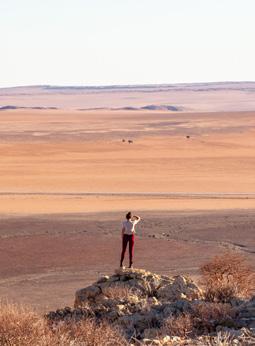
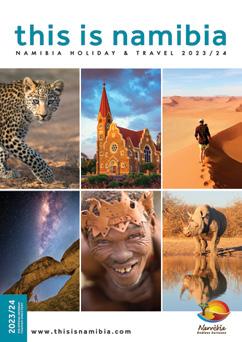
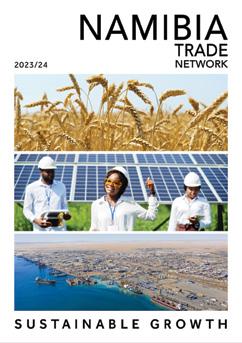
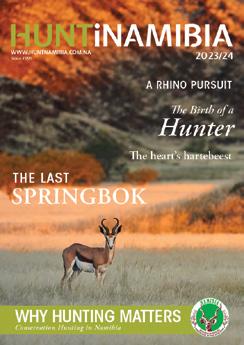


Meet the voices behind the incredible stories we share with Namibia each month. The pages of FlyNamibia are a collaboration of Namibian minds and passions and we hope you find a narrative that speaks directly to you amongst them.
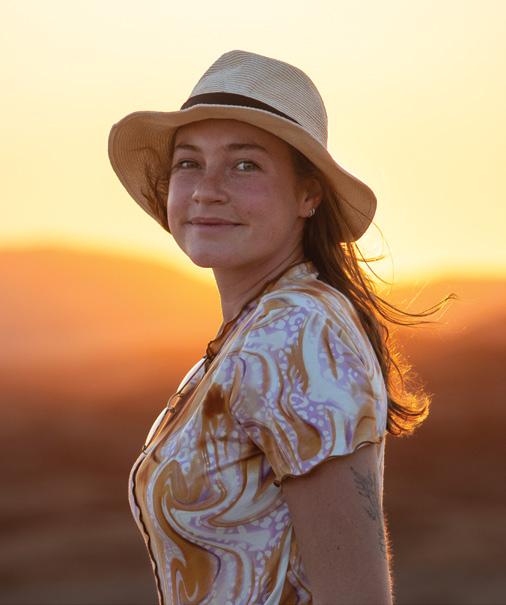
Charene Labuschagne
Art director, writer and presenter, she tells stories out of pure necessity for expression. Namibia is her favourite subject.
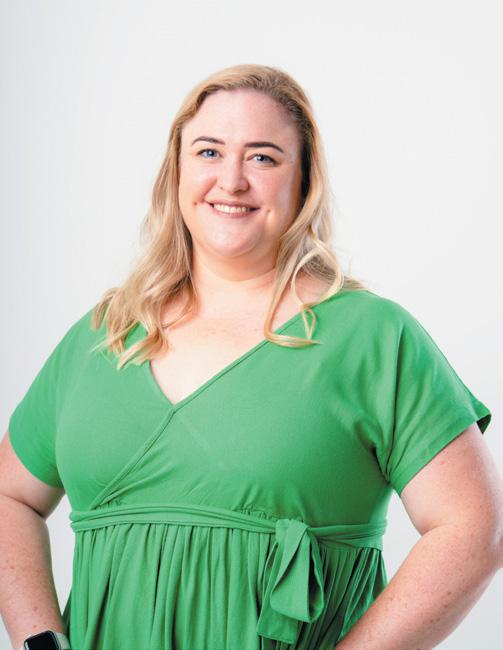
Dr Megon Sadler General Practitioner with special interest in paediatrics. "Trust your gut and NEVER give up advocating for your child."
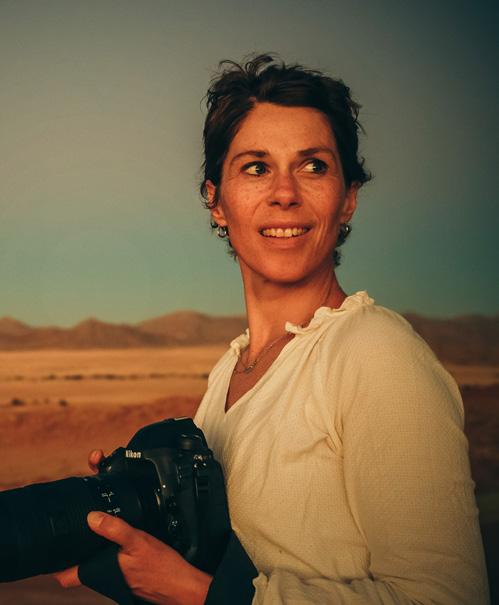
Barbara Kerkhof
Photographer and storyteller, involved in the Africa Millimetre Telescope-project. Lives in The Netherlands, feels at home in Windhoek and loves to run mountains.

Rukee Kaakunga
A Windhoek-based communications specialist, blogger and freelance fashion writer. Contact her via email: rukeekaakunga@gmail.com
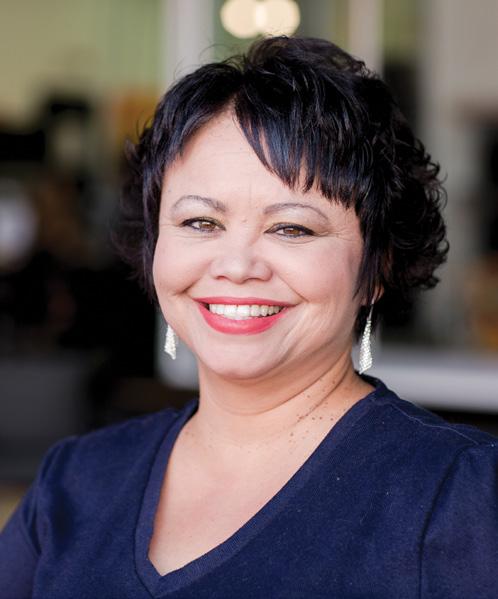
Maggie Forcelledo Paz 99FM News & Content Editor. Passion and dedication to keep the nation abreast with what’s happening on national and international level.
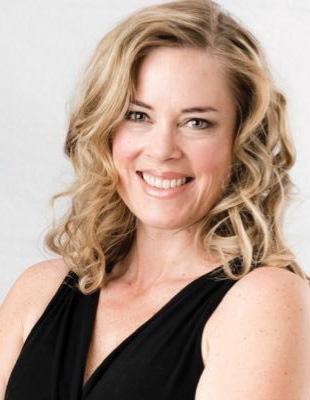
Kirsty Watermeyer
Media & communication consultant, storyteller & writer. A Multi-media producer, presenter, voice artist & curious wellbeing enthusiast.

David Bishop
Media commentator and critic, Climbing wall owner, voracious reader, sometime writer, active lifestyle proponent, family man, and coffee lover.
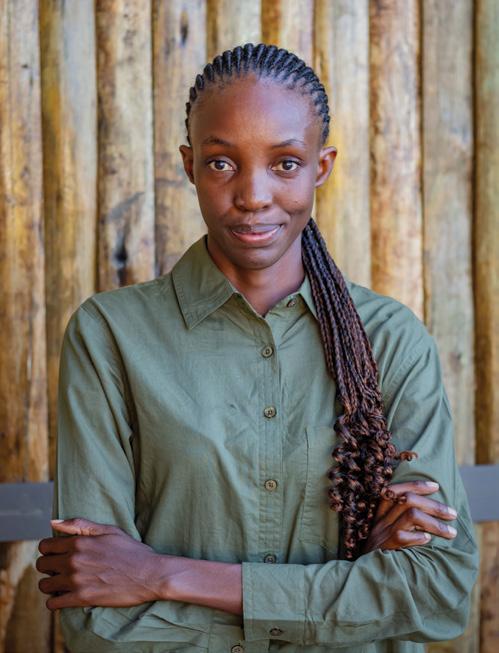
Agnes Shivute
An environmental consultant with interest in indigenous flora, nature enthusiast, Namibia Botanical Society awardee and aspiring author



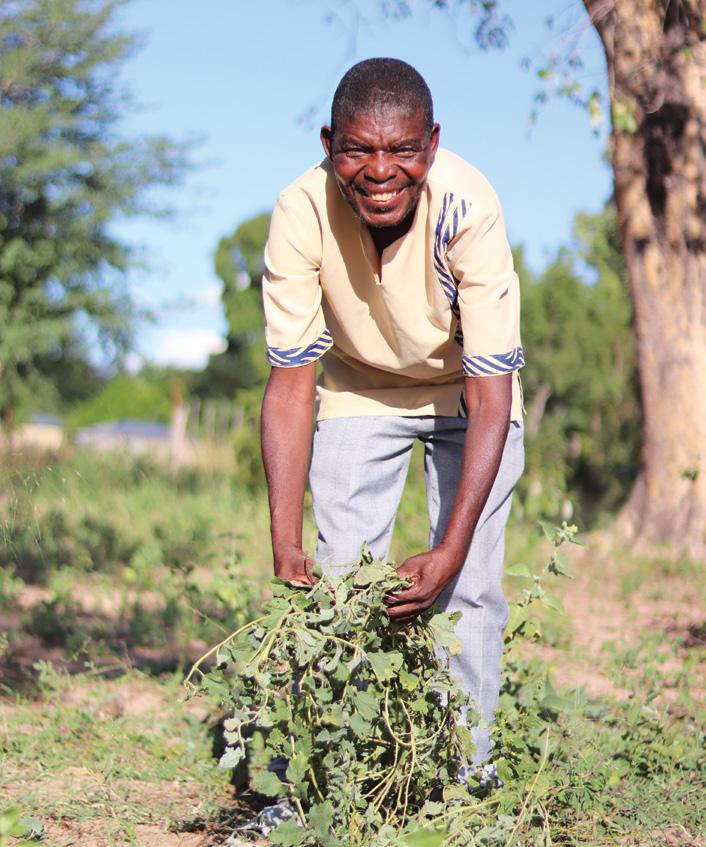


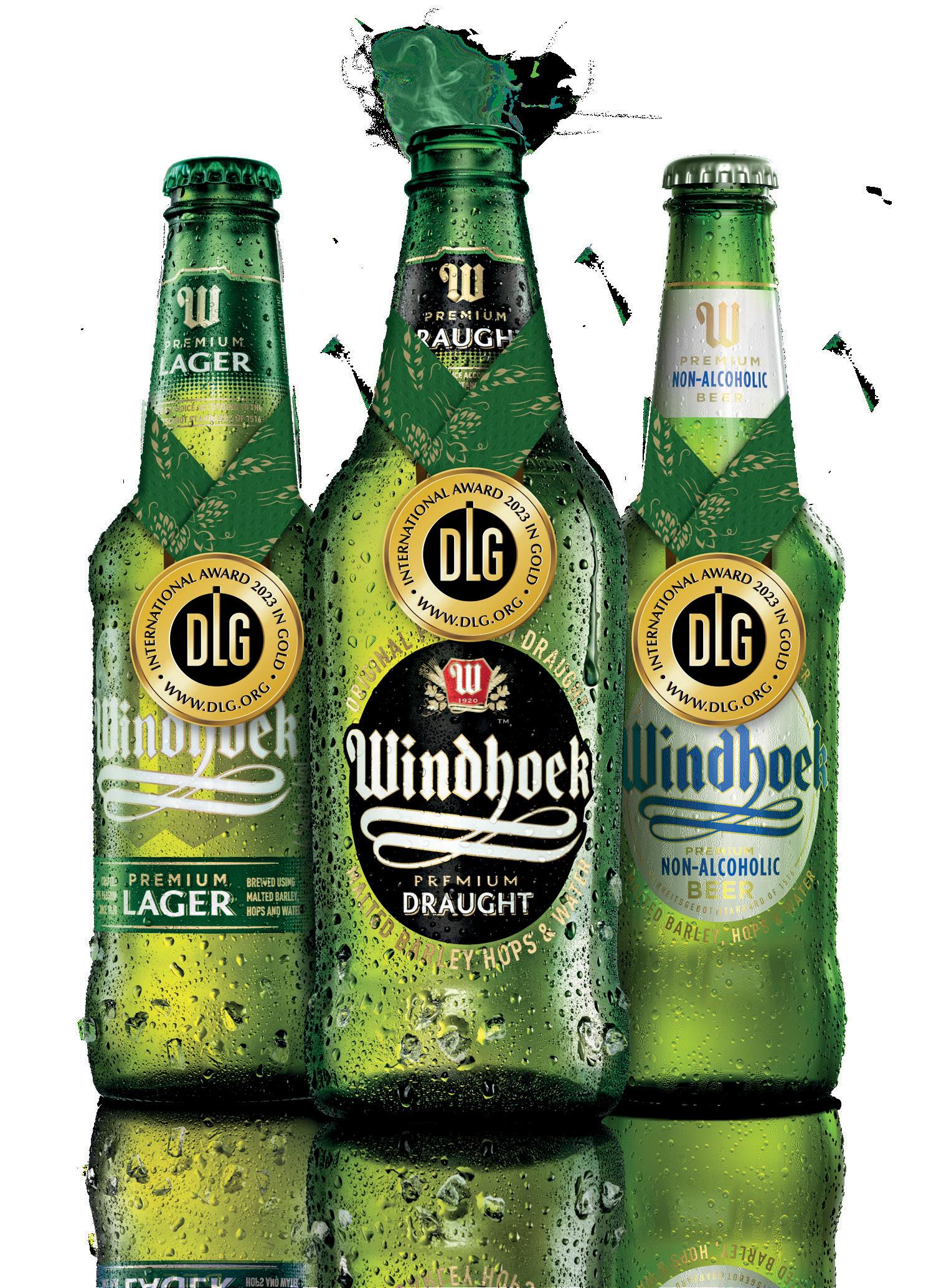
www.flynam.com
Select your flight
Select which tickets you would like to purchase: destinations, travel dates, morning/afternoon departure. We offer multiple fare options such as: Saver, Classic or Premium
Please enter names as they appear on passport or travel documentation
LOGIN to upload passenger details from previous booking.
Baggage policy, sporting equipment, over weight luggage or to add an additional bag(s)
Cash payment at: Eros Airport, Ondangwa Airport, Oranjemund Airport
Online card transaction
Electronic Funds Transfer (EFT)
PayToday app
Buddy SuperApp
Check-in prior to flight
Online check-in opens 24 hours before departure of the flight on Fly Namibia
Check-in opens 1h 30min before domestic flight and 2 hours before international flight.
Check-in CLOSES 30 min prior to domestic flight and 50 min prior to international flight.
Additional flight information / rules
Read up on all our additional information regarding terms and conditions, and tick the selection box once completed to continue.
Fill in your payment details in our DPO paygate to make final payment.
Transaction confirmation will be sent to passenger email entered.
You can also purchase from:
Windhoek Eros Airport Office
Ondangwa airport office
Rundu airport office
Katima Mulilo airport office
Hosea Kutako airport office
All major travel agents
Items NOT allowed in hand luggage:
Lotions and aerosols above 100ml, flammable aerosol, sharp objects, i.e. nail files, nail scissors, Leatherman, matches.
MAX 20kg Per person
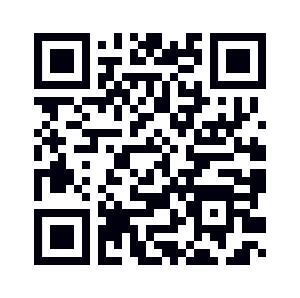


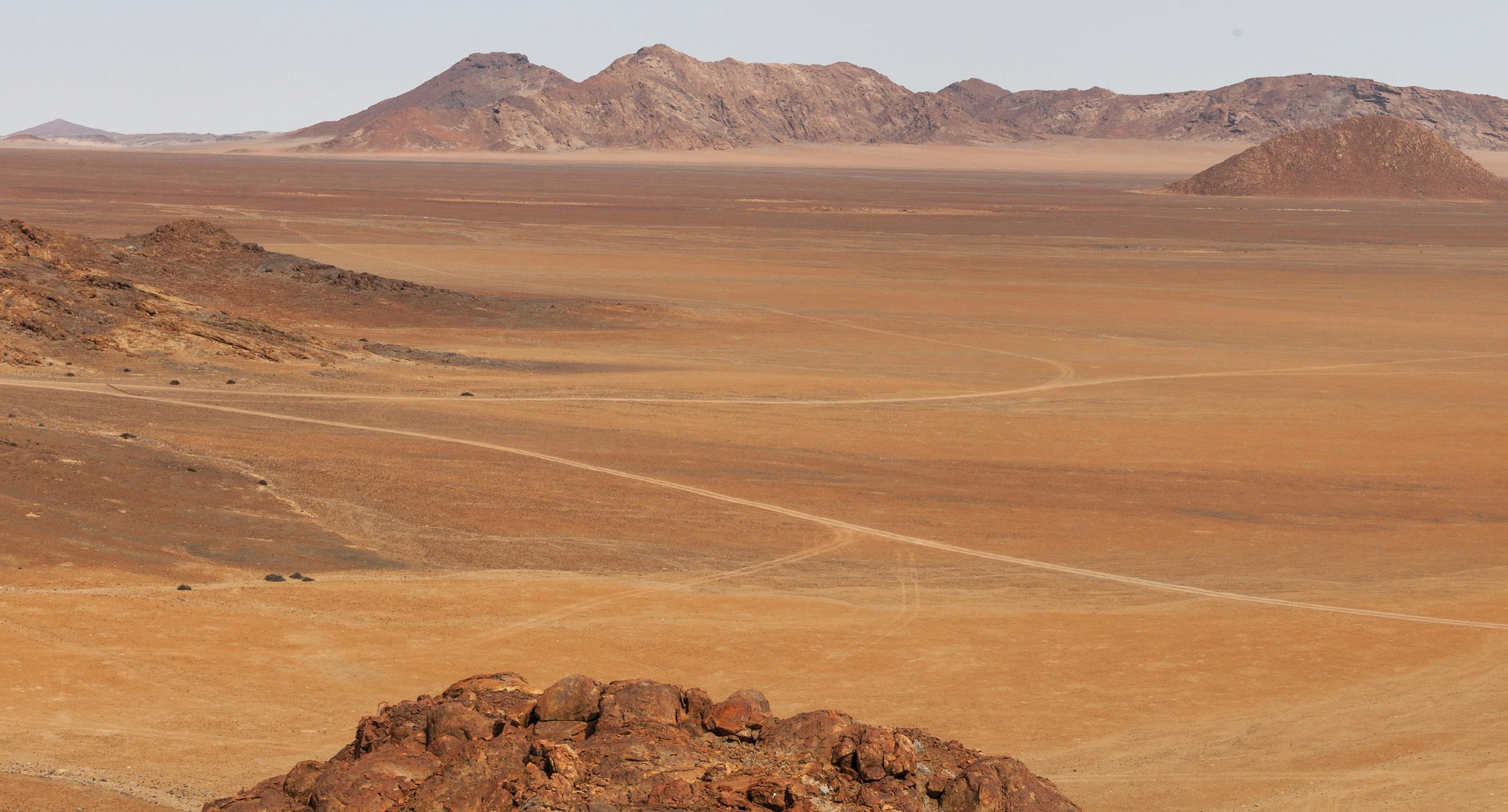

Contact The Call Centre | +264 83 339 0011 NAMIBIA BOTSWANA
Schedule as per date of going to print. Please check the FlyNamibia website to stay updated on flight destinations, routes and schedules.
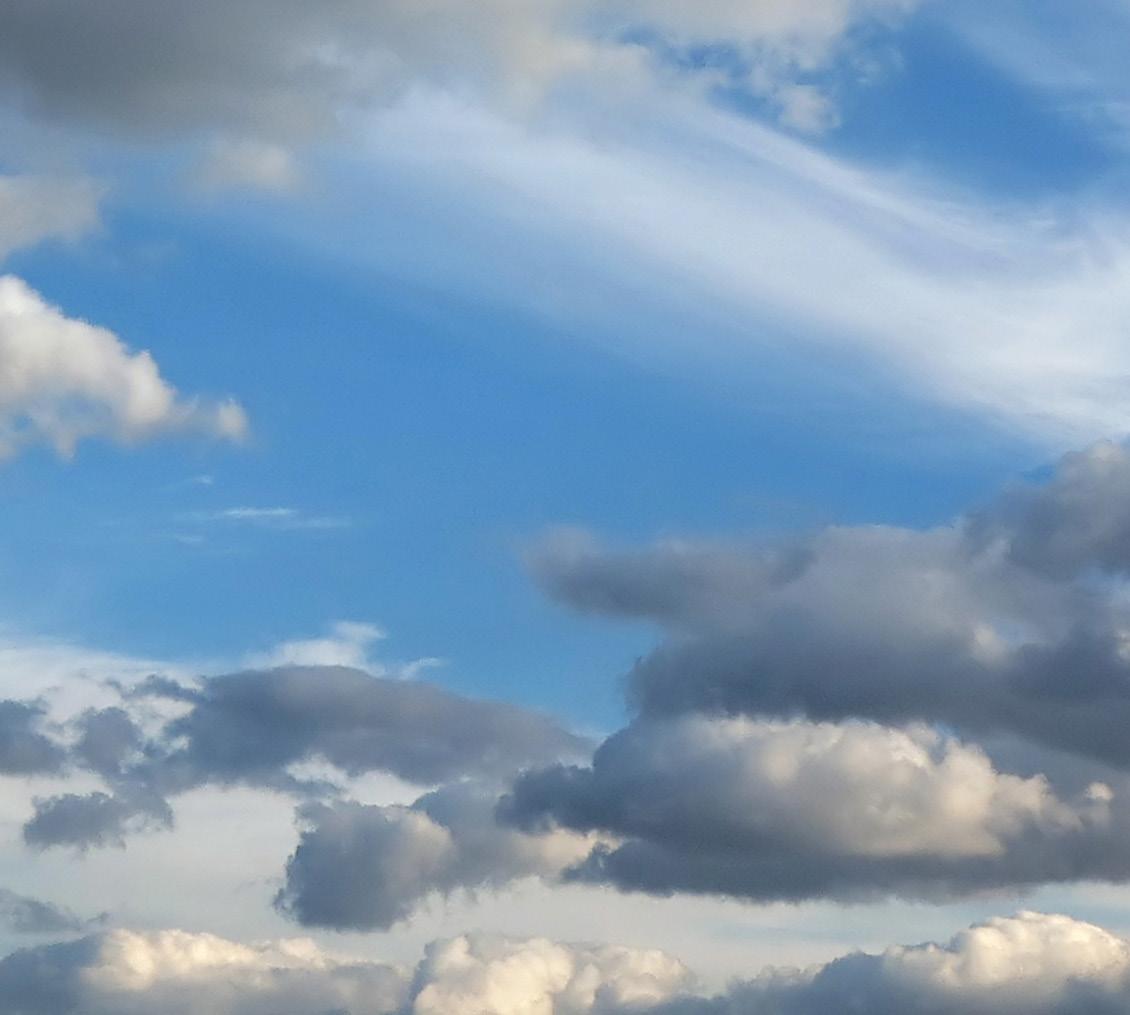
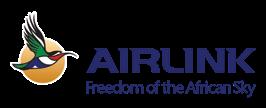


Big or small, save for it all in your Savings Pocket
Whatever you’re saving for, the FNB Savings Pocket will help get you there.
· Transact via our digital channels: FNB App, Online Banking and Cellphone Banking
· Use Bank your Change® to save your leftover change every time you swipe
· Set up Scheduled Transfers into your account
· Get cash back from FNB Rewards deposited into your linked Savings Pocket
· Get immediate access to your money
· Competitive interest rates

Welcome on board this FlyNamibia flight.
As we soar into the exciting month of May, we are thrilled to welcome you aboard FlyNamibia, where your journey is as important to us as your destination. This month’s issue of our inflight magazine is brimming with exciting news, heartfelt acknowledgements, and updates that we are eager to share with you.
We proudly mark a milestone in our expansion with our inaugural flight to Victoria Falls, which took place on 4 April. This new destination is not just a link between landmarks, but a bridge between cultures, offering our passengers more spectacular landscapes and adventures. Whether you’re gazing out over the thunderous waters of the falls or exploring the surrounding rainforest and national parks, this route promises unforgettable experiences. Make sure to make use of the launch special offers on this route, valid until the end of May. Visit our website to book.
Alongside our ongoing partnership with TotalEnergies, we have made more seats available on the weekday flights between Eros Windhoek and Lüderitz, offering travellers more options to improve their flying experience. More seats mean more opportunities to explore the beauty of Lüderitz at your convenience. Always striving to improve your FlyNamibia experience, we are also excited to introduce our new dynamic pricing system on this route. Further
to this enhancement, we are also delighted to announce the opening of our new office at the historic Lüderitz Waterfront Old Power Station Building. This location will provide a hub for local travellers and offer comprehensive travel services in a stunning setting.
As we celebrate Workers Day on 1 May, we extend a heartfelt thank you to our dedicated workforce and the people of Namibia who contribute tirelessly to our nation's growth and prosperity. FlyNamibia is more than an airline; we are a family of professionals committed to excellence and the upliftment of our community.
Looking forward, the excitement continues as we anticipate the launch of our Windhoek to Maun route on 3 July. This new route will connect more passengers to the wonders of Botswana, making it easier to explore one of Africa’s most pristine natural landscapes and wildlife havens.
We invite you to sit back, relax, and enjoy your flight with FlyNamibia. Explore the pages of our magazine for travel inspiration, interesting and informative stories from across the Land of the Brave, and more information about our services.
Thank you for choosing FlyNamibia.
Warm regards, The
FlyNamibia TeamEUnique local lifestyle brands we're loving, and why you should too
We love the newly launched LED Vellie. The veldskoen is deeply ingrained in southern african heritage and is as traditional as a braai and kapana. These vellies are made from top quality, full-grain leather, lined with luxurious suede and constructed using the stitch-down method, meaning these puppies will last you a lifetime of comfortable and durable wear. Usually, you would have to put in a few kilometres in leather shoes for them to be comfy, but the LED Vellie features a soft inner padding and anti-slip sole, guaranteed to sit just right from the first time you wear them. Ladies and gents size 5-11 are all UK and true to size. Colours include tan brown, choc brown, green, denim and a special rose gold colour for ladies. Try them on in-store or shop online at www.leonengelbrecht.com
@leonengelbrechtdesign
+264 81 251 2169
30 Lazarett Street, Southern Industrial, Windhoek



We love that Toshari is only 20 minutes drive from Etosha National Park. This property is the ideal sojourn for a safari adventure in Namibia. Offering something for every preference, Toshari boasts standard and luxury double rooms, standard and luxury family rooms sleeping 5 and 4 respectively, as well as 3 private campsites.The lodge’s expansive spaces are decorated in contemporary safari style and feature striking views of the mopane bushveld that surrounds. Championing authentic Namibian hospitality, your every need is met at Toshari, with the choice of three swimming pools, wholesome meals, guided game drives to Etosha and visits to the nearby Omapaha Himba Village. Experience the wonders of Etosha while staying in comfortable style at Toshari.
+264 67 333 440 (Lodge Reception) | +264 64 405 045 (Reservations) info@toshari-namibia.com


We love their microneedling offerings. Meraki Wellness Centre prides itself in offering clients the cutting edge of skincare technology. Over a year ago, the wellness one-stop destination introduced collagen induction treatments known as microneedling. This treatment involves penetrating the epidermis of the skin with a multi-needle-tipped pen, creating a series of micro-injuries. Stimulating collagen production, microneedling is incredibly effective in decreasing wrinkle depth, improving cellular regeneration, minimising pores and healing hyperpigmentation, amongst many other benefits of heightened collagen production. Meraki Wellness Centre’s microneedling treatments start from N$900 for face application, and neck and décolletage extensions are also available.
+264 81 247 8077
Meraki Wellness Spa: 150 Olof Palme Street, Eros, Windhoek
Meraki Wellness Centre: Unit 16, The Village, Liliencron Street, Windhoek



We love their exceptional offerings, not only with regard to accommodation but also the event and conference facilities. With a focus on providing unparalleled experiences, Droombos redefines corporate conferencing by providing state-of-the-art facilities, including indoor and outdoor spaces, breakaway rooms, and top-notch audiovisual equipment. Their approach emphasises opportunities for connection and growth, complemented by unique team-building activities and customised catering options. Moreover, their stunning on-site accommodation ensures that events are more than just gatherings – they are unforgettable experiences, perfectly blending business with leisure.
www.droombos.com.na
reservations@droombos.com.na or events@droombos.com.na
+264 81 872 2613 / +264 83 288 8352 / +264 61 250 238


Are you a Nam or SA based lifestyle brand?
List your label with us for only N$1,000 per month for 6 months | fly@venture.com.na

10 minutes with local tastemakers
Born with a rhythm in his soul and headphones on his shoulders, pursuing a career in music was always on the cards for YD Fre$h. Known to the local social scene and his friends as Nduvi, the rapper, DJ and up-and-coming producer navigates the artist’s way with authentic swagger and a sunny disposition. His energy and zest for life is truly tangible and contagious.
Because artists are as great as the sum of their stories, I would like to take you back in time and introduce you to the YD Fre$h I met in primary school. Always taking up space in the most earnest of manners and jumping at any opportunity to be on stage, YD Fre$h dominated the playground, school plays and, as I would later find out, wrote rap lyrics in class. I watched in admiration at his creative spirit that seemed inexhaustible and his innate ability to attract people with conversation and laughter.
Today, this magnetic quality still makes him an absolute joy to watch behind the decks or freestyling at Sound Garden. Yet he is also the kind of guy with whom you can have a beer and debate about Namibia’s colonial-era statues and their place in our post-independence landscape.
“As a Herero, music has always been an integral part of my life,” says YD of his upbringing between Windhoek and the family farm. His childhood was marked with performances at family functions and dance battles with his cousins. Where his formative years laid the foundation, YD Fre$h’s musical renaissance was cemented in high school. With increasing access to music, a love for house and hip-hop music manifested and changed his outlook on life. “It was a platform for people who looked and sounded like me to say what they wanted to. I went from listening to music to writing my own lyrics in class whenever I got the chance.”
When aspirations for studying sound engineering in Germany fell through, YD Fre$h saw it as an opportunity to refine his craft locally. Initially gaining some industry experience in radio production and digital marketing, the all-round artist moved on to teach himself how to DJ, which is the scene where you would most likely run into him these days. But he does not like to be confined to one form of creative expression only. “I’m not just a musician or DJ or an amateur actor – I am an artist first,” he says.

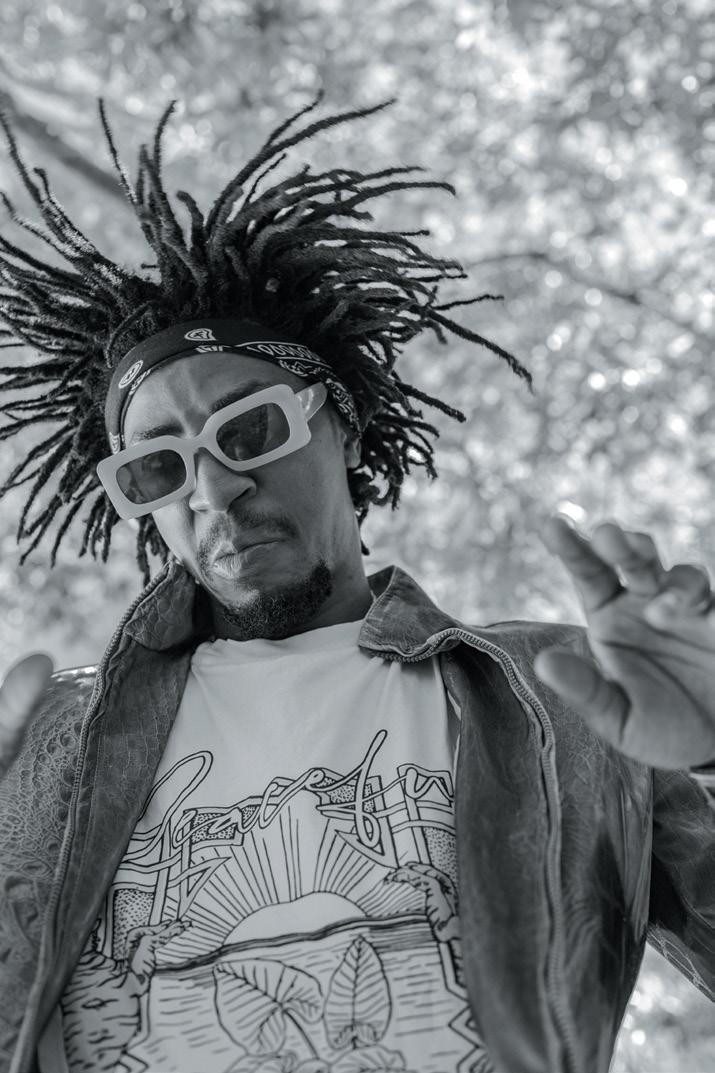
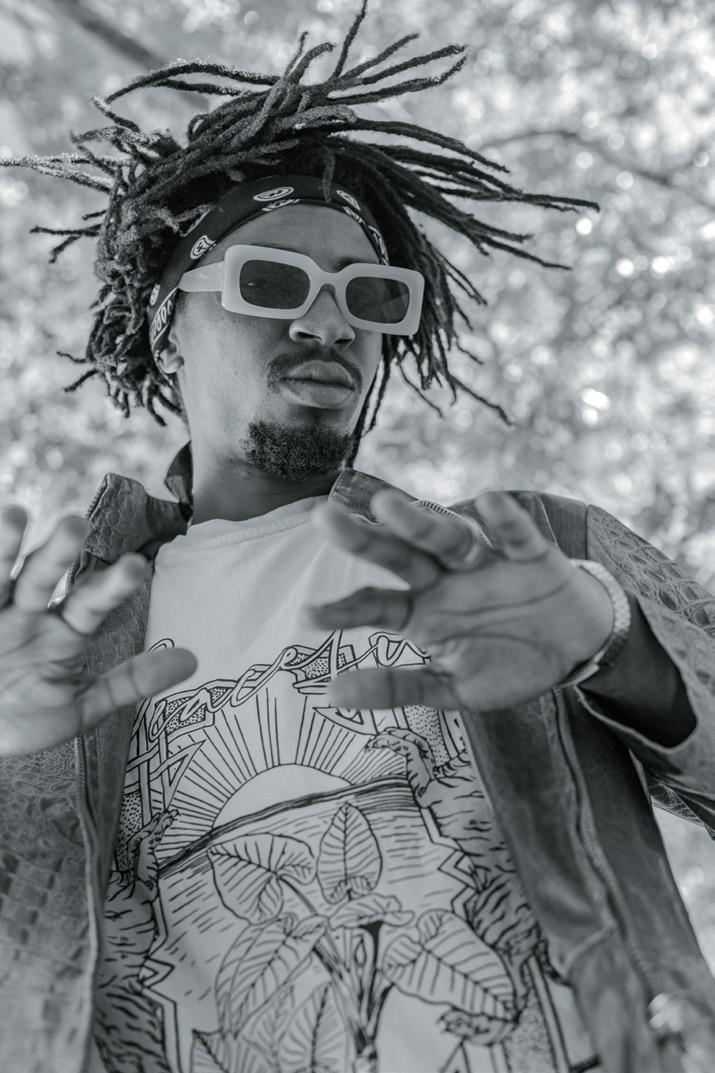









YD Fre$h is currently working on a debut solo hiphop album, producing soon-to-be-released Afro house music and preparing to go on tour in Europe during their summer. “I’m a very proud Namibian and I think showcasing our country, music and style is what I like most about playing at international shows,” says YD about upcoming sets in Palma de Mallorca, Belgium, Germany and the Netherlands.
Further broadening his repertoire, YD Fre$h has ventured into the events-planning space alongside fellow DJ Ndeshi Imbili. Together they founded Pamwe, short for tulipamwe (meaning “together” in Herero/Ovambo), and so far have hosted two successful lifestyle events merging music, small fashion brands and live painting performances. The artist incorporates his Namibian heritage in every creative endeavour and plays an integral role in the development of our collective music and arts scene.




Despite his growing demand as an afro-tech and house DJ and nearing a decade in the industry as a rapper, YD Fre$h remains humble. He credits this to time spent volunteering with underprivileged and less-abled children during a gap year in Germany. “Besides giving me a chance to travel Germany and get more inspiration from the world, it made me extra thankful for the things I have.” Years later, he still maintains this attitude.
When asking YD Fre$h about his free-time hobbies and passions, he is not shy to admit that music is his biggest hobby, saying, “It’s a career that envelops you.” Clearly, music is his true calling – a passion turned profession. But besides discovering new music, writing lyrics and planning DJ sets, he loves camping, gaming, spending time with his dog and learning new skills.
As a long-time acquaintance, watching from the sidelines as Nduvi grew and gained momentum has been nothing short of a spectacle. I know for certain that his talent and outlook on life will take him far, so this is your cue, dear reader, to join the chat and witness his renaissance too.
As YD Fre$h always says, “Big things coming – your local DJ.” Charene

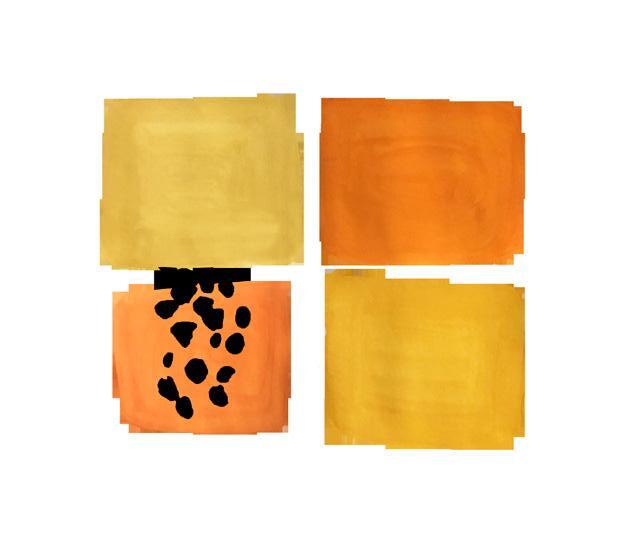


INGREDIENTS
450 g cake flour
20 ml baking powder
200 g Parmesan or Cheddar cheese, finely grated
100 g smoked salmon, diced
30 ml chopped capers
15 ml chopped chives
2 eggs
360 ml buttermilk
150 ml oil
2.5–5 ml salt
TO SERVE
3–5 slices of Norwegian smoked salmon (per person)
2 small onions, sliced into rings
100 ml capers
8 lemon wedges
Coarse black pepper
250 g cream cheese

• Preheat oven to 180°C. Grease 2 muffin pans.
• Sieve flour, baking powder and salt into a mixing bowl.
• Add the salmon, cheese, capers and chives.
• Beat eggs together with buttermilk and oil.
• Pour half of the oil mixture into the dry ingredients and mix well. Add the rest of the mixture and mix again.
• Spoon mixture into the muffin pans.
• Bake for 20–25 minutes.
• Leave to cool for a few minutes, then transfer the muffins onto a wire rack to cool completely.
• Makes approximately 18 muffins.
• Cut muffins in half and place in the centre of a large serving platter.
• Arrange smoked salmon around the muffins.
• Decorate with onion rings and capers.
• Grind some black pepper over the platter.
• Place the lemon wedges in between the salmon.
• Serve with cream cheese on the side.
Discover more of Antoinette's delicious recipes in Life on a Table
To order your copy contact Bonn Nortjé at Venture Publications: bonn@venture.com.na


Black holes are mysteries in space that bring us to the edge of our knowledge. Curiosity and science take us beyond that edge. The Africa Millimetre Telescope (AMT), to be built in Namibia, will help us answer the big questions in life, according to professor Heino Falcke and student Vikapita Ilonga.
Professor Heino Falcke is an astrophysicist at Radboud University in Nijmegen (The Netherlands). He studies black holes and high-energy elementary particles and co-founded the Event Horizon Telescope (EHT), a global network of telescopes that created the first-ever images of black holes. To improve these images, the Africa Millimetre telescope is intended to make for a stronger network and provide a better picture of this great mystery in space. Nothing escapes from a black hole, not even light. Also, black holes are lightyears away from our planet. And yet, the EHT managed to create an image of a black hole.
Glued to the TV
As a child, Falcke dreamt of being an astronaut. When Apollo 15 was launched in July 1971, and reached the moon, he was glued to the television screen. Even at his young age (5) he knew something very big was happening. After several years, however, due to a light trembling of his hands he let go of his great dream of travelling to space. “Astronauts need to be perfect. And since I am not perfect, like most people, I decided to keep studying the universe from down here,” he says. That turned out pretty well – Falcke has come a very long way in his research.
Vikapita wants to be an astronaut. “Not a female astronaut, or an African astronaut. I just want to be an astronaut. I
want to be among the stars, to venture where only few people have been”, says Vikapita Ilonga, also known as Vii. She is 20 years old and she has known what she wants in life since she was a little girl. “Everybody has been to Italy, Greece and the oceans these days. Hardly anyone has gone beyond our atmosphere. It’s my internal drive to always figure out more, past the point where nobody knows.”
Born in Windhoek, raised in Omingernyeu and Gobabis, Vii now studies astronomy at UNAM. She moved house 23 times and therefore finds it hard to stay long in one place. “When I was a kid, we were never financially stable, but we got by. My mom spoiled me, somehow”, Vii smiles. Some would say spoil, others would say meeting the needs of an extremely curious kid. Her mother works for the Ministry of Internal Relations and Cooperation. Her father chose Vii’s name and then left his family. Vikapita means “everything comes and goes”.
“When I was younger I didn’t know physics was a subject,” she recalls. “I just assumed everybody was investigating everything all the time. As a kid, I was shy and I held conversations in my head all the time, wondering where the wind came from and where it was going. And I didn’t know how an animal breathes but I wanted to know why the air comes out hot. The more I know, the more I get bored with one thing and want to learn about other matters.”
Falcke says, “I always ask: ‘why?’ and ‘why not?’. Sometimes something seems impossible, until you try to do it in a different way. In astronomy, so much is yet to be discovered. The universe is almost infinite and so very big. I might not travel to space as an astronaut, but as an astronomer I travel to remote places to visit telescopes on mountain tops. The
connection with the universe is almost tangible when I look up at the night sky”.
Like-minded people
“Now that I am studying at UNAM I am meeting new friends and like-minded people who also study the cosmos,” Vii says. “I see them going through the same processes as I do. Also, the availability of more information and the possibility to find answers at the library are pretty cool.” She used to have a student loan, but for this year she had to sell some livestock to continue studying at university. To pursue her big dream of space travel, Vikapita wants to stay on board of the AMTteam. She is also thinking about getting her pilot’s license, because it might bring her closer to being an astronaut. “With all that experience I should get closer to making my dream come true,” she reckons.
Most extreme phenomenon
As a co-founder of the EHT, the global network of telescopes, Falcke is one of the scientists who was involved in creating the images of black holes – including Sagittarius A* in the centre of our own galaxy. “A black hole is the most extreme phenomenon in the universe, since it’s literally a hole in time and space,” he says. “At the event horizon, the place where stars fall into the black hole, all our theories in physics collapse. They just don’t make sense anymore – and that is very interesting!” Falcke mentions that if you would pour ten buckets of water into a black hole, it would create enough energy for a small but densely populated country like The Netherlands for a whole year. “That’s quite bizarre, I would say. And well, we do have the water… but not the black hole. But maybe we should be glad about it, since it’s pretty dangerous as well.”
Hereafter
Black holes are some kind of hereafter, says Falcke. “If you could go into them and survive, you could talk – but your words would never come out. It shuts you down from the world. Black holes form the edge of our knowledge.
The Africa Millimetre Telescope that we are building in Namibia, will contribute to our knowledge of black holes. It will be an important link in our global network of telescopes. And also, this radio telescope will tell us so much more about the activity in the universe. When you look up to the night sky, it seems so peaceful up there. But the truth is that there is a lot going on! We can’t see it with the naked eye, but stars are exploding and black holes are being formed – and all of these molecules create clouds of dust that we can’t see, but our radio telescopes can. And since all life once started from dust, I think it’s important to find out as much as we can. To know where we came from is one of the biggest questions in life.”


“Space is the next frontier for humanity,” Vii agrees with Falcke. “Sailing across the seas was a big thing once and space is the next, I guess. Black holes are a collective mystery: we just don’t know much about them. We have opportunities to figure them out and that is so exciting –anything is possible when it is not proven any other way. Namibia being part of the investigation of a mystery this big is just… wow. I imagine people looking back on us, 400 years in the future from now, and they will say we were pioneers, like we look at what Columbus did in the past. At first, people called him crazy, but in the end he paved the way for so many opportunities.”
The Africa Millimetre Telescope (AMT) is a project run by Radboud University in The Netherlands and the University of Namibia for building a 15-metre radio telescope on or near the Gamsberg mountain. This telescope will be unique in its kind – it will be the first completely newly built facility to be part of the Event Horizon Telescope, and it will be the only telescope of its kind in the whole of Africa. An integral part of the AMT project is a social program which includes a mobile planetarium: an inflatable dome that can host up to thirty kids at a time to watch interactive shows on the wonders of the universe. FlyNamibia, together with Nedbank, Gondwana, the Lithon Foundation, Minds in Action, Ineos Grenadiers, the Namibia Science Society, Gree, Perfect Glass and Edu Vision, are proud sponsors of the AMT mobile planetarium.




Ursula Witbooi holds the future-focused position of manager of Namdeb’s Building Forever project. This unusual role combines two passions Ursula has nurtured since her “carefree” childhood on the dunes and the beaches of Walvis Bay. In the rock pools and the desert, she found a love for nature that spurred her towards her Master of Science degree. In her own words, “It’s no surprise that I ended up pursuing a career in natural science.”
Secondly, the values of her family taught her to love people and to give of herself in service to others. She says, “The most fundamental thing that shaped me as a person was the Christian values that my mom and dad instilled in me.” This community-centred perspective has become a crucial part of Ursula’s work at Namdeb and her personal life as a wife and mother of two sons.
Having a clear purpose makes it easier to get through the tough days. Ursula is lucky to share her personal purpose with Namdeb’s corporate purpose. Namdeb’s purpose, she tells 99FM’s listeners, is “Mining for good.” She adds, “When we do mining for good, we build forever.”
Building Forever is about having a positive impact on the people and the planet while conducting Namdeb’s mining efforts. “What this role does,” Ursula explains, “is it takes the fabric of Namdeb, its DNA, which comprises those
sustainability initiatives, and it casts forward a view on how we can utilise these blocks and build something that can remain forever.”

Her role comes with immense pressure as it has a strategic impact on the whole country. “It’s really worth doing,” she says. “And nothing worth doing comes easily.” However, Ursula encourages young Namibians to do it anyway. “Seize any opportunity you get,” she says. “Have grit. My mom taught me to have grit and never give up.”
Ursula also has a word for older, more established Namibians. The population of the country is mostly young people. Ursula urges older people to steward their skills carefully and transfer those precious skills to young people who can take Namibia forward in the next generation. “We must identify young people that we can hook and become coaches and mentors to them,” she says. “I recognise that we cannot do everything in life, but each one of us can do something to make a great Namibia.”
Proudly Sponsored by




Rachel Futter is a Namibian woman making her mark in the world of conservation as the senior coordinator for the Combating Wildlife Crime projects at the Namibia Nature Foundation. She is passionate about life, nature, art, movement and much more. She is also fast becoming a renowned photographer, an area of her life where she gets to express her artistic side.
She became a photographer through a fateful moment. After finishing her studies, Rachel was looking to do something that challenged her. It was then, en route to a Tuareg music festival (Festival au désert) which took place just outside of Timbuktu, Mali, that she bought a camera. She simply wanted to document the incredible trip she was taking, but it turned out to be one of those destined moments, where photography found her.
Rachel grew up in a creative single-parent household, with a music loving, artistic mother. Today, Rachel’s photography has become her art. She explains that she loves getting lost in the present moment which she finds through photography. “With photography, I can wander off and be alone and photograph things that are beautiful to me. I can spend hours doing that. My favourite things to photograph are abstracts. I might not necessarily see the finished photograph when I take it, but it reveals itself later. I find that when I wander off into nature, looking through my lens – whether physically or metaphorically – I see things differently. I see how the light catches certain angles differently. I love taking photographs of the abstract detail rather than the thing in its entirety. To me,






some of the most beautiful photographs I’ve taken are of the broken, imperfect things; the ones less aesthetically pleasing to most. It’s the patterns and shapes. I see the music, the colours that come out when you look at it like that. It’s beautiful.”
Rachel’s proudest moment as a photographer was when she sold her first print. “My mom was still alive. She was so chuffed. She never pushed art on me but always encouraged me to take my photography seriously. I hope to have a solo exhibition one day – I know she would have loved that. That’s the dream.”
Her hope is to show the world through her photography that anyone can be creative. “You don’t have to know everything about any form of artistic expression before you’re allowed to give it a go. If you have a curiosity, give it a shot. Worst case, you delete the photos, chuck a canvas, or never get asked to bake school cupcakes again. You owe it to yourself to try. But give it a go a few times because practice does help.” She adds that she feels Namibians are extremely supportive of one another’s artistic expression. “Especially when we talk about our creativity, people would say, ‘Oh, you sketch, bake, make chilli sauce and crochet tiny hats for cats? Amazing! You need to show the world!’”
As Rachel explains, “I think everybody has an innate need to create something. Be it through art, a hobby or whatever. For me, I am an incidental photographer. I don’t intentionally go out to take a photograph of a thing. I just happen to be there, wandering around, in my own little world and I see the details. I find the art in the object.”
Follow Rachel on Instagram at @rachelfutterphotography
Kirsty Watermeyer
Insights from the preliminary report on the
The Namibia Statistics Agency (NSA) has unveiled the preliminary findings of the 2023 Population and Housing Census (PHC). This milestone marks Namibia's first fully digital census, leveraging technology to enhance operational efficiency and data quality. The release of the preliminary report offers a glimpse into Namibia's evolving demographic landscape, shedding light on population growth, regional disparities and household dynamics. The census employed a de facto approach, counting individuals who spent the census reference night in the country, coupled with a comprehensive listing of structures using Geographic Information Systems (GIS) technology.
Namibia's population now stands at 3.02 million, a nearly twofold increase since independence in 1990. The report shows that Namibia experiences accelerated population growth, with an annual intercensal growth rate of 3.0%, the highest since independence. The Khomas Region emerges as the most populous, followed by Ohangwena and Omusati, while Omaheke remains the least populous. The report also shows that the average household size has decreased to 3.8 persons per household, indicating shifting demographic patterns. As for gender composition, females constitute 51.2% of the population, continuing a trend observed in previous censuses.
The 2023 PHC implemented robust data quality monitoring mechanisms, leveraging GIS technology and real-time dashboards. Public engagement initiatives fostered community participation to minimise errors and ensure comprehensive coverage. In compliance with the Statistics Act, the census protects individuals' privacy by only reporting aggregated data. Personal details are strictly safeguarded to maintain confidentiality and data integrity.
The report offers a comprehensive snapshot of the country’s demographic landscape. From population growth trends to regional disparities and household dynamics, the findings provide invaluable insights for policymakers, researchers and stakeholders. As Namibia continues to evolve demographically, the digital transformation of censustaking processes ensures timely and accurate data for informed decision-making.
TOTAL POPULATION OF NAMIBIA ON 24 SEPTEMBER 2023
3,022,401
With 494,729 inhabitants the Khomas Region maintains its status as the most populous region in the country, while Ohangwena and Omusati follow closely with population counts of 337,729 and 326,671 respectively.
The smallest household sizes are shown for the //Kharas and Erongo regions, in contrast to Kavango East and Kavango West's larger households. In terms of regional variances, Ohangwena boasts the highest population density, followed by Oshana and Khomas, while //Kharas, Hardap and Kunene are sparsely populated regions.
Census data serves as a powerful tool for monitoring and evaluating the efficacy of implemented policies and programs. By tracking demographic shifts and socio-economic trends over time, policymakers can gauge the impact of interventions and recalibrate their approaches accordingly, ensuring optimal outcomes and societal progress. Equity in the distribution of government services and allocation of resources hinges on the accuracy and comprehensiveness of census data. By identifying areas of need and disparities within communities, governments can allocate resources judiciously, striving to bridge gaps and uplift marginalised populations. Whether it is determining the location of schools, healthcare facilities or infrastructure projects, census data guides equitable distribution and thereby fosters inclusivity and social cohesion.
The census plays a pivotal role in monitoring the progress of developmental goals, ranging from National Development Plans (NDPs) to global agendas like Vision 2030 and the Sustainable Development Goals (SDGs).
Maggie Forcelledo Paz

Amidst the harsh realities of life in Namibia’s informal settlements, where poverty cycles persist, parents face an uphill battle in prioritising the development of their children, particularly during those crucial early years. With long work hours, unemployment and unsafe living conditions, many parents find themselves caught in a cycle of stress and hardship, struggling to prioritise their children’s early years – a critical period for growth and learning.
In the heart of these communities, where societal norms often endorse physical discipline as the primary means of moulding children into productive members of society, the path to nurturing care can seem elusive. Yet, amidst the trials and tribulations, there lies a glimmer of hope; a beacon of light in the form of initiatives aimed at empowering parents and safeguarding the future of their children.
Parents are the architects of their children’s futures. However, Namibia is a country marked by rapid urbanisation and the erosion of traditional community and family structures, so parents are often left adrift amidst a sea of conflicting advice and a lack of support in terms of meaningful resources. Poverty, inequality and the absence of comprehensive childcare support systems only compound the challenges they face. Moreover, a staggering lack of awareness about early childhood development (ECD) leaves parents ill-equipped to provide the nurturing environment their children need to thrive.
The reality of Namibia’s post-conflict, post-apartheid landscape is stark. Violence within homes, schools and communities leaves scars that may never fully heal. A 2019 study on violence against children, conducted by the Ministry of Gender Equality, Poverty Eradication and Social Welfare in collaboration with UNICEF, revealed alarming statistics: nearly a third of females and over 40% of males experienced physical violence before reaching adulthood. Shockingly, a significant portion of these acts of violence were perpetrated by parents or other adult relatives. The findings underscored a disturbing trend of multi-incidence sexual violence, with the majority of victims suffering at the hands of family members.
In response to this pressing need, Development Workshop Namibia (DWN) has embarked on a transformative initiative
aimed at breaking the cycle of adversity through parental empowerment. Since 2021, DWN has conducted a series of nationwide parental workshops, totalling 382 to date, with the aim of educating parents on the critical importance of ECD. Facilitated by trained community members, known as ECD champions, these workshops provide a safe space for parents to engage in discussions on positive discipline, coparenting and avenues for seeking help in cases of abuse.
One such champion is 40-year-old Fillipus Shambwangala, a respected community leader who underwent the DWN Training of Trainers (ToT) programme. As a workshop discussion leader, Shambwangala embodies the spirit of positive change. For him, these workshops represent more than just educational sessions – they are a testament to the power of community and collective action. “ECD is the foundation on which a child is built,” he remarks, his voice brimming with conviction. “By investing our time and efforts into shaping children from a young age, we pave the way for a brighter future – one marked by reduced drop-out rates, lower crime levels and a generation of well-rounded adults.”
Through the tireless efforts of individuals like Shambwangala and the collective commitment of organisations like DWN, a brighter future for Namibia’s children is within reach. By empowering parents, fostering supportive communities and prioritising early childhood development, we can pave the way for a generation of resilient, compassionate and emotionally intelligent adults. And in doing so, we lay the foundation for a more prosperous and equitable society for all.
As Shambwangala aptly puts it, “Together, we can build a better tomorrow – one where every child has the chance to spread their wings and soar.” With each workshop, each conversation, DWN is inching closer to that vision, one empowered parent at a time.
Frieda Kakololo

For more information into the work carried out by Development Workshop Namibia, scan the code to explore our website.
In 1886, seven police officers and at least four civilians lost their lives in the infamous “Haymarket Affair” that saw American workers downing tools for their first ever work stoppage and participating in a strike demanding an eight-hour workday. One hundred years later, more than 1.5 million South African workers and thousands of students, taxi drivers, vendors, shopkeepers, domestic workers and self-employed people answered the call made by the Congress of South African Trade Unions to stay away from work. Cognisant of these events, we once again start the month of May by celebrating Workers’ Day.
While the day has traditionally been a reason for workers to come together and demand better working conditions, fair wages and other labour rights, the focus has increasingly started to lean to a demand for a more just and equitable society for all. It is also a day that is unequivocally linked to the labour union movement and the often derided “socialist”-leaning policies and viewpoints its members espouse. What many people forget, though, is that it is the same movement that was responsible for many of the things we take for granted these days, including the two-day weekend, better wages, improved working conditions, maternity leave, the abolition of child labour, paid holidays and pensions.
desire for unions to have more influence in the country has increased from a record-low 25% in 2009 to 43% in 2024.
With reports of underpaid teachers having to spend their own money to buy school supplies for their classrooms, people needing to work multiple jobs just to make it to the end of the month, and employees working for companies owned by some of the richest people in the world facing unreasonably high injury rates, or having to avoid going to the bathroom in order to meet their targets, unreasonably long working hours as well as harassment and alleged racial discrimination, it is not hard to understand why.
Workers in what many would consider the epitome of capitalism are increasingly saying: “Enough is enough!”
One of the main reasons I have chosen to focus on only one of the three public holidays we celebrate this month and write about unions is that I have been watching the recent growth in pro-union sentiment in the United States with keen interest.
Workers in what many would consider the epitome of capitalism – where people spend decades paying off their student loan debt, where the federally mandated minimum wage has not been increased since 2019 and where 66.5% of all bankruptcies, or 530 000 a year, are the result of a medical emergency – are increasingly saying: “Enough is enough!”
A report commissioned by the Economic Policy Institute shows that in 2023, more than 60 million workers wanted to join a union but could not do so, and that Americans’
To rub salt in the wounds, Oxfam reports that the richest 1% of the global population now owns 43% of all global financial assets and only 0.4% of the world’s largest and most influential companies are committed to paying staff a living wage. Record-speed increases in the prices of necessities are being blamed on global inflationary pressures, yet many companies are reporting record profits. According to surveys, the majority of young people say they believe that they face challenges and hardships their predecessors did not have, and that it appears impossible for them to ever attain the financial security of their parents’ generation. Considering this, it makes sense for them to look for anyone or anything that might help them make their lives even just a little bit better.
An interesting aside: while we celebrate Workers’ Day on 1 May in remembrance of the events of Haymarket being integral in the establishment of the tradition, America doesn’t, instead marking “Labor Day” on the first Monday of September. More surprisingly, though, seeing as it was the eight-hour workday movement mass stoppage by Australian stonemasons on 21 April 1856 that inspired the American strike, Australia doesn’t either!
Until next month, enjoy your journey.
David Bishop


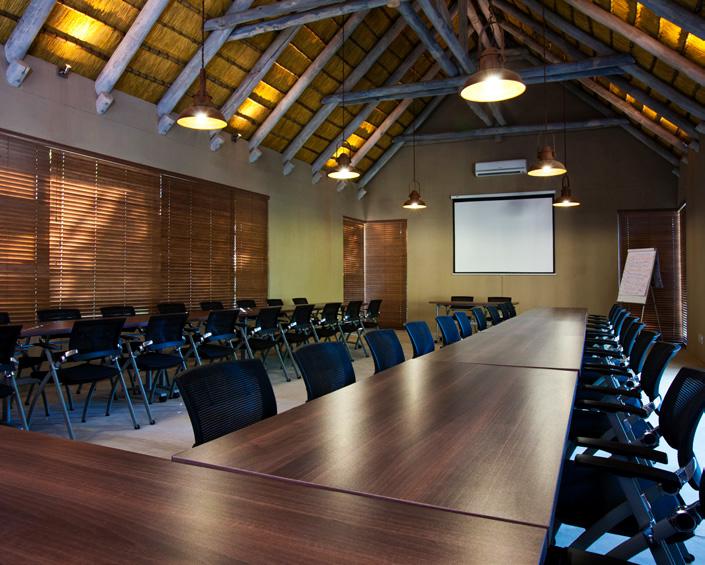
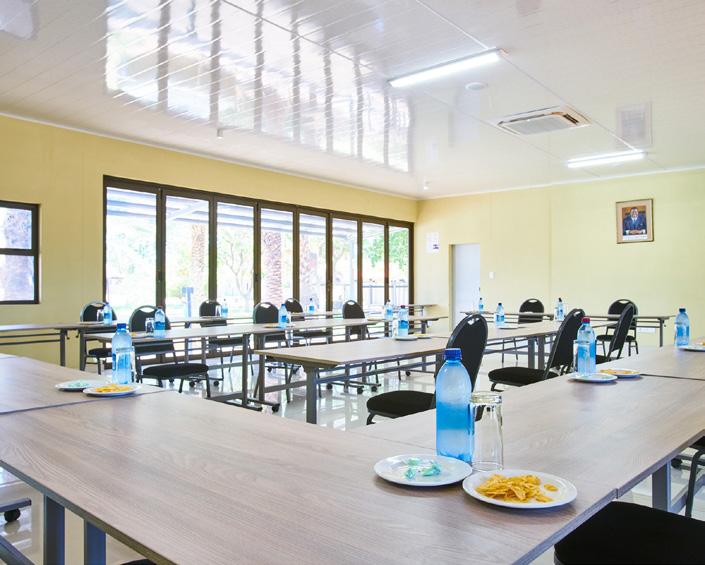
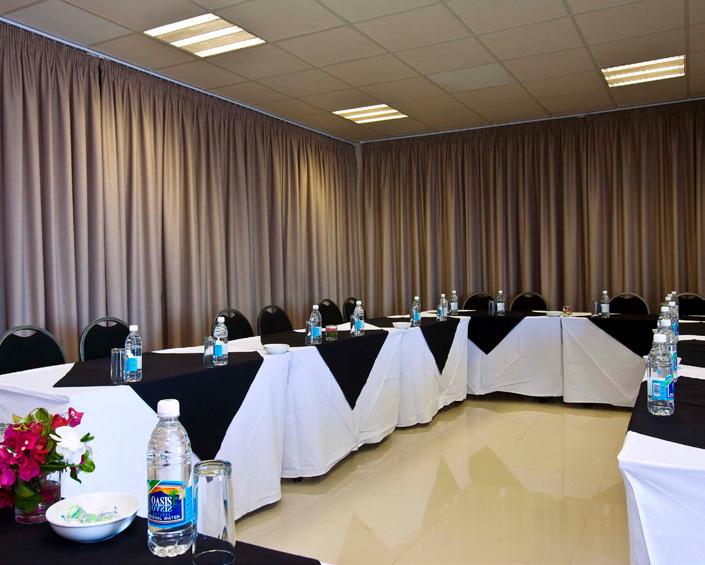
Discover unparalleled conference facilities amidst breathtaking natural landscapes with Namibia Wildlife Resorts. Host your next event at Popa Falls Resort, where the serene Okavango River meets nature’s tranquility. Gross Barmen Resort offers a rejuvenating retreat, blending wellness with state-of-the-art conference amenities. At Khorixas Camp, immerse yourself in the rich history of ancient civilizations while enjoying modern conference conveniences. Lastly, Hardap Resort presents a lakeside haven, perfect for inspiring creativity and fostering collaboration. Elevate your conference experience with us!
285

|
| www.nwr.com.na Enjoy exclusive discounts on accommodation and activities, ranging from 50% for Namibian to 10% for international cardholders. With a validity of three years and easy renewal, it’s tailored for businesses with a minimum group size of 10. Experience convenience, savings, and unparalleled benefits for your corporate outings.

A gripping psychological thriller that keeps you on the edge of your seat from start to finish. The story follows Alicia Berenson, a renowned painter who suddenly stops speaking after being accused of murdering her husband. The narrative unfolds through dual perspectives, alternating between Alicia’s silence and the psychotherapist Theo Faber’s quest to unravel the truth. Alex Michaelides masterfully weaves a tale of deception, obsession and hidden secrets, leading readers through a maze of twists and turns until the shocking conclusion.
Goodreads score: 4.18/5

This acclaimed investigative journalism podcast explores true crime stories through in-depth reporting and storytelling. Each season of Serial focuses on a different case, unravelling mysteries, examining evidence and delving into the lives of those involved. Hosted by Sarah Koenig, the podcast’s compelling narratives and immersive style have garnered widespread acclaim and sparked discussions about criminal justice, ethics and storytelling in podcasting.

Infamous drug lord Pablo Escobar is quoted as saying, “The only man I was ever afraid of was a woman named Griselda Blanco.” In this miniseries, Sofia Vergara delivers an outstanding performance as single mother and Colombian immigrant, Griselda. Inspired by real events, this fictional dramatisation shows Griselda Blanco’s journey from Medellín to becoming “the Godmother” of Miami’s drug empire during the 1970s through the early 2000s. The series thoughtfully unpacks themes of female entrepreneurship, loyalty and family, and succeeds in giving an in-depth glimpse into the dark world of drug cartels.
Tomatometer: 87%
Our monthly round-up of good books, podcasts, channels, movies and series.

A mesmerising novel that transports readers to the marshlands of North Carolina. Delia Owens captures the essence of nature while weaving a poignant coming-of-age story and a compelling murder mystery. The protagonist, Kya Clark, grows up isolated in the wild, earning her the nickname “Marsh Girl”. As she navigates the challenges of survival and loneliness, Kya’s life becomes intertwined with the suspicious death of a local man. Owens’ lyrical prose and vivid descriptions bring the marsh and its inhabitants to life, creating an immersive reading experience that lingers long after the final page.
Goodreads score: 4.39/5

This YouTube channel explores complex scientific and philosophical concepts in an accessible and visually stunning manner. Through animated videos, the channel covers topics ranging from the origins of the universe to the future of artificial intelligence, breaking down intricate ideas into digestible explanations. The channel’s commitment to accuracy and clarity, coupled with its engaging storytelling and vibrant animations, makes it a favourite among viewers interested in expanding their knowledge while being entertained.

Set in the backdrop of a remote town nestled in the French Alps, Sandra, her husband Samuel, and their son Daniel live a secluded life. Their simple existence is shattered when Samuel is discovered dead in the snow beneath their chalet. As the police probe into the mysterious circumstances surrounding his death, suspicions arise, pointing towards murder rather than suicide. Sandra finds herself at the centre of the investigation, grappling with accusations and delving into the intricacies of her complex relationship with Samuel, while Daniel, who is blind, is the sole witness.
Tomatometer: 96%
ATUSHE VAMWE, WE ARE ONE!
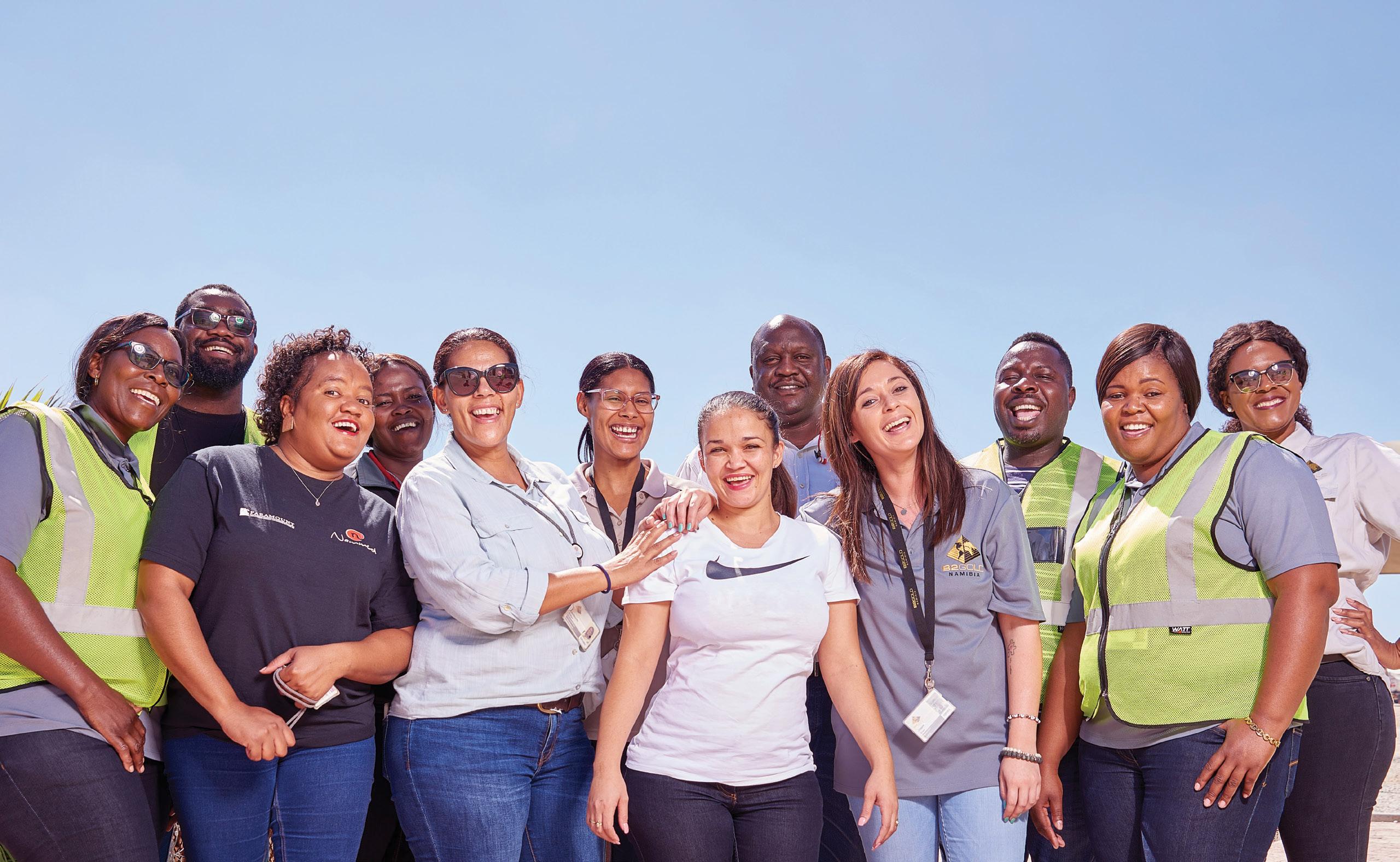
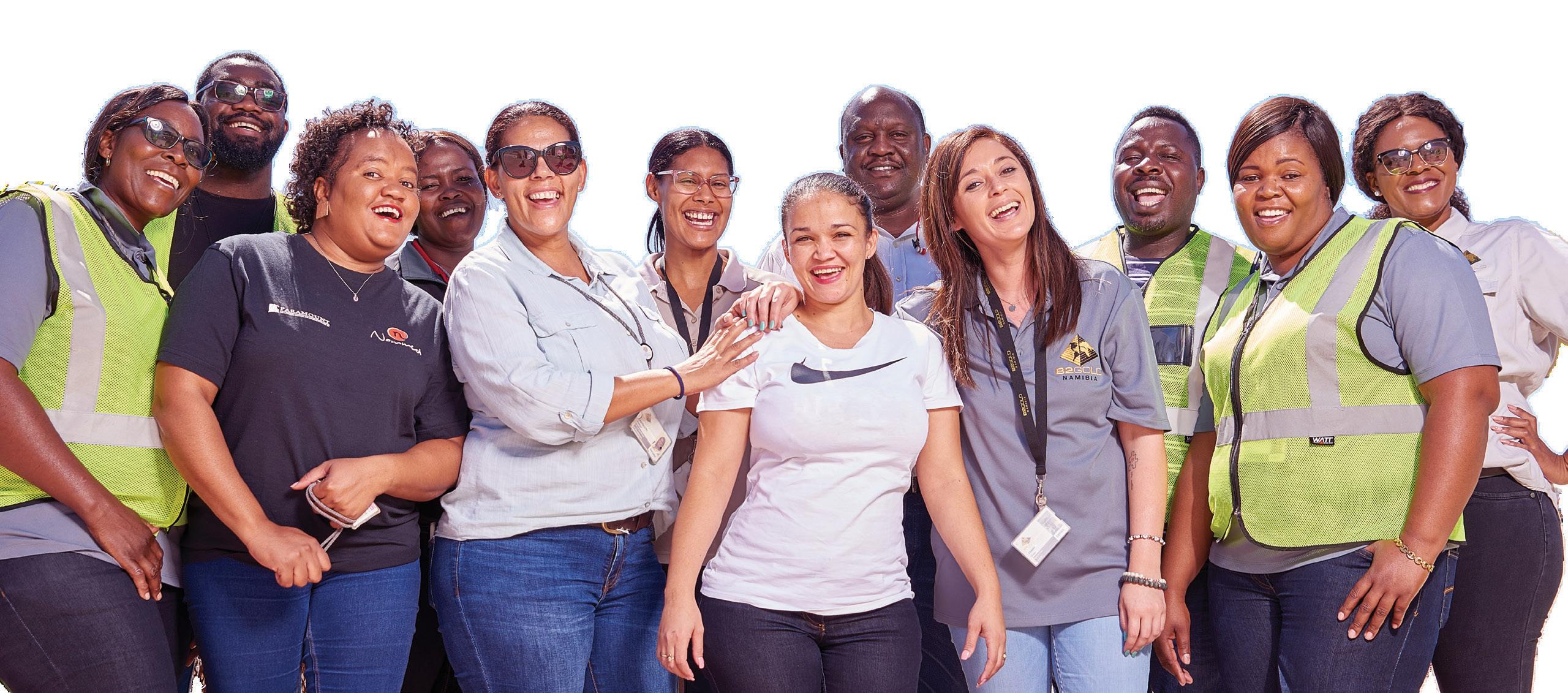



Home Affairs, Immigration, Safety and Security personnel stationed at the Dobe border post officially received their longawaited houses, a move that signifies not only the completion of a lengthy project but also a commitment to delivering enhanced services to the people. The construction of the staff accommodation for immigration officials commenced on 2 June 2015, with an initial practical completion date set for 28 January 2017. However, various challenges during the construction process resulted in delays. Despite these setbacks, the Namibian Police Force (NAMPOL) building team assumed responsibility for the project on 21 July 2021 and brought it to conclusion.
Situated approximately 52 kilometres from Tsumkwe, the Dobe border post serves as a vital entry point, facilitating movements between Namibia and Botswana. Open seven days a week from 7:30 to 16:30, this strategic border post caters for a diverse range of travellers, including daily commuters, international visitors and tourists. Over the past three months alone, the border recorded a total of 1,493 arrivals and departures. The newly inaugurated staff accommodation comprises eighteen housing units, including two three-bedroom units and sixteen two-bedroom units. The infrastructure not only meets the current housing needs of personnel but also accommodates future placements, ensuring continuity and efficiency in operations.
“Movements between the two countries are taking place, requiring us to improve our facilities. Systems are being put in place to ensure that the community can cross the border with their identity documents. I further urge the responsible constituency councillors to disseminate all relevant information to our people so that they can apply for the new-look identity document which will allow them to cross the border,” says Lucia Witbooi, Member of Parliament and Deputy Minister of Home Affairs, Immigration, Safety and Security.
Situated approximately 52 kilometres from Tsumkwe, the Dobe border post serves as a vital entry point, facilitating movements between Namibia and Botswana.
Moreover, the ministry remains committed to utilising modern technology, such as the electronic Border Management System (eBMS), and providing for staff placement and capacity building to ensure effective border management control. The deputy minister further urged staff members stationed at the border post to regard the infrastructure with a sense of pride and responsibility, to treat it as their own and to ensure its upkeep and maintenance for the benefit of both current and future officials. “Let us change the mentality of carelessness by ensuring that the property is always well maintained. This is our property, and it should be our pride to occupy it,” said Witbooi.
The deputy minister extended the ministry’s gratitude to its internal and external stakeholders for their continued cooperation and support.
Maggie Forcelledo Paz

My name is Dr Megon Sadler, and I am a general practitioner with special interest in paediatrics. I live and work in Windhoek, and I am also a mom.
I have spent most of my career working with children and I am extremely passionate about the education and empowerment of parents. With that in mind, I would like to dispel a few myths about infections in children.
You may have heard your doctor talk about a URTI. This is a term commonly used in medicine and it stands for “upper respiratory tract infection”. In short, these are infections that affect the sinuses and the throat. Believe it or not, it is normal for a healthy child under the age of six years to have 6-8 URTIs per year, and for these symptoms to last up to 14 days. Send that child to a school, and this number increases to a staggering 10-12 infections per year – that’s about one every month! Needless to say, this can become very overwhelming. So, what are the common myths I hear in my practice, and what is the truth?
Myth: “My child has a fever, cough and a runny nose, so he needs antibiotics.”
The truth: Studies have shown that the majority of URTIs are viral and in fact do not need to be treated with antibiotics. Symptoms in most healthy children will resolve with supportive treatment, such as pain medication, immune boosters and something to dry up the runny nose. However, it is important that your child is examined by their doctor to make sure they do not have a bacterial infection, which WILL require antibiotics.
Myth: “My doctor did not give me antibiotics, but my child is not getting better. I will have to see another doctor.”
The truth: Owing to the fact that we have seen few to no new antibiotics on the market in the last decade, doctors have had to become incredibly careful with when and
which antibiotic to prescribe. This “antibiotic stewardship” in simple URTIs is of the utmost importance, but it does not mean that your child might not develop a secondary bacterial infection, or that there was not an early bacterial infection when your child was first examined. The effectiveness of delayed antibiotic prescribing strategies is well documented. However, this may translate to you as the parent coming in for a follow-up visit if you suspect your child’s condition has worsened, having to post-date a prescription, or discussing with your doctor the possibility of collecting a pre-written prescription if symptoms have not settled after 72 hours of supportive medication.
Myth: “Herbal meds do not work and are not safe for my child.”
The truth: Although I am not a homoeopath, I genuinely believe that natural medications can be helpful in the treatment of various ailments, in the same way that preventative medicine is often better than curative medicine. Not only have ingredients like Echinacea long been proven to help boost your immune system, but things like adequate sleep, a well-balanced diet, sufficient hydration and L-O-V-E can help your child recover.
Remember, as a parent, you are part of the team that is taking care of your child. Trust your gut and never give up advocating for your child.
Dr Megon D. Sadler General Practitioner






Forget everything you heard. The University of Namibia (UNAM) fashion scene is back with a bang!
At a recent event, fashion enthusiasts were treated to a rare phenomenon as the fashion department’s students and alumni showcased at the main campus. This self-identifying fashion addict almost missed the event, but the mad dash to make it was well worth it.
Participants in the showcase included some of UNAM’s most prominent alumni, such as current lecturers and Masters graduates Chakirra Claasen and Maria Caley. Also on the list were seasoned designers Loini Iizyenda and Esther Iyambo. Rising stars Chanté Bock, Maija-Liisa Nautende and Quin-Leigh Hammond also took part, adding a fresh take to the runway show.
The threads that connect the Commonwealth
As part of the Commonwealth Fashion Show, an initiative of UNAM’s Humanities Department and the British High Commission, the show concept called on designers to give their best runway interpretations of the Commonwealth countries assigned to them.
The designers gave brilliant representations of countries like Namibia, Zambia, Ghana, India, Kenya, Malaysia, South Africa, Nigeria and Tanzania, to the delight of the crowd which included some of the country’s high commissioners and ambassadors.
While the event was primarily to showcase UNAM’s fashion talents, organisers also took the opportunity to integrate other artists from the Humanities Department. The MC, for example, is an English student, while the main dance performance of the evening came from the university’s Aawambo cultural troupe.
when she revealed her stunning Master’s collection in 2017. As part of this event, Chakirra showed her undeniable talent and mastery in textile and construction in her pieces dedicated to the East African country of Kenya.
Another UNAM lecturer, Maria Caley, treated guests to her traditionally inspired work and was in her element representing Nigeria. Loini Nyanyukweni, also a seasoned designer, stunned the crowd with her exceptional take on South African fashion.
Working together closely with their assigned country’s high commissioners, the UNAM alumni showcased a deep understanding and care for cultural representation. It was evident from the garments that many conversations preceded the conceptualisation and execution of all the pieces, resulting in creativity within the bounds of being tasteful and culturally sensitive.

Apart from the Commonwealth attire on display, attendees saw snapshots of all the designers’ original works from previous collections.
British High Commissioner to Namibia, Charles Moore, thanked the Commonwealth Secretariat for their support in making the event possible while acknowledging the power of fashion in the expression of cultural exchange. In a brief speech, he highlighted the transformative power of fashion in fostering cultural exchange and understanding, which guests bore witness to.
An exciting aspect of the Commonwealth Fashion Show was how it brought some of Namibia’s most iconic designers back to the runway. The feeling of nostalgia was undeniable as we witnessed fashion designers who last showcased as far back as 2017 bring back some much-needed fanfare to the industry.
Chakirra Claasen, who now dedicates her time to teaching and mentoring young designers, was last in the headlines
Overall, the Commonwealth Fashion Show was a refreshing event for the fashion space and an opportunity to enjoy some of Namibia’s best-kept fashion secrets. It not only had guests buzzing with excitement throughout the colourful event, but it also served as an opportunity for the Commonwealth community in Namibia to connect and network at a platform celebrating all of them.
Perhaps most of all, this event lit a fire in the participants who all started their fashion careers at the biggest fashion school in Namibia. Judging from the conversations at the event and long after – including talks of making the event an annual affair due to its success – we can only expect more from this talented group who reminded us all that fashion is truly and well alive in Namibia!
Rukee Kaakunga




Another insightful event for thought leaders and captains of industry took place in the capital, the first of the Namibia Trade Network’s Business Breakfast Club (BBC) for the year. The Business Breakfast Club offers a platform for members to engage with like-minded individuals and stay up to date with the latest trends and developments in a wide array of fields.
As the Namibia Trade Network’s 2023/24 publication is centred around the theme of sustainable growth, it was fitting to start off the year with an event that looked at learning and development within the landscape of sustainable growth.
The BBC, a platform for networking events and conversations, hosted a thoughtful panel discussion with experts on the topic. The panel included Nina Louw, Head of Strategy and Business Development at FirstRand Namibia, Julia Muetudhana, the Executive for Talent, Innovation and Productivity at NIPDB and Elke Hanstein, the Debmarine Senior HR Manager. These industry leaders shared insights into how businesses can foster a culture of continuous learning and adapt to the demands of a rapidly evolving economic landscape.
Hosted at The Stellenbosch Wine Bar, a captive audience was in attendance as the panel unpacked questions that looked at the corporate culture and approach to organisational learning, as well as the most sought-after skills currently lacking in the Namibian labour market.
Another intriguing discussion of the panellists centred around how companies can be part of the solution in preparing for a future where certain sectors are expanding rapidly and skilled labour is becoming a necessity. As Nina Louw explained, it is crucial for companies to foster intergenerational, intercultural and interdisciplinary learning environments to facilitate the crucial skills transfer from the leaders of today to the future leaders. The panellists debated on how best to address the skills gap in the Namibian labour market, particularly in light of burgeoning sectors such as energy.
As Namibia stands on the cusp of significant economic expansion, the BBC’s discussions underscored the critical need for strategic and continuous investment in human capital development. As Julia Muetudhana put it, “Learning is the humility to continue growing.”
The conversation also explored tangible strategies for embedding long-term thinking and sustainability into corporate learning initiatives. Each speaker detailed their viewpoints on how we can enhance operational productivity while still contributing to societal progress through inclusive and sustainable educational practices. Another key takeaway, as outlined by the panellists, was ways for companies to expand their learning opportunities without incurring additional costs.
The Business Breakfast Club Namibia is an exclusive membership-based event series designed for professionals and business leaders who are looking to expand their networks and gain valuable insights into various Namibian industries. With a focus on fostering meaningful connections and promoting knowledge sharing, each event features industry talks from experts and thought leaders, providing members with unique opportunities to learn from some of the most successful and innovative minds in business. Whether you are an entrepreneur, executive, or simply looking to connect with other professionals, the Business Breakfast Club Namibia offers an unparalleled opportunity to expand your network and deepen your knowledge of trade and industry. Learn more at www.bbcnam.com
The Namibia Trade Network and the Namibia Trade Network’s Business Breakfast Club are initiatives of Venture Media, a 100% Namibian publishing house with expertise in content creation, creative concept development, publishing, social media management and video production. Focusing on the pillars of tourism, conservation and industry promotion, Venture Media’s three decades of expertise position them as an industry leader in the distribution of accurate, credible, up-to-date and regular information in print, film and on social media.
Kirsty Watermeyer

Swakopmund is much-loved by Namibians as a welcome respite from the heat in the interior. It is also popular among visitors because of its old-world charm and relaxed atmosphere. Founded in 1892 during German colonial rule, it served as the territory’s main harbour for several years.
Today this quaint town between the desert and the sea is enhanced by lush green lawns, elegant palm trees and carefully tended public gardens. It has a wide choice of hotels, guesthouses and restaurants, and several coffee shops selling traditional German cakes and pastries. The coast with its desert hinterland offers many options, both for adventure and for relaxation.
Just before reaching Swakopmund from the interior, enclosed in a small glass-fronted structure, visitors can view the Martin Luther ‘steam-ox’ imported from Germany in 1896 to transport goods between the town and other settlements. When the steam tractor became irretrievably bogged down in the sand, it was dubbed Martin Luther, because of Luther’s historic statement in 1521, “Here I stand, may God help me, I can go no further.” The venue has a museum, toilet facilities and curios for sale.
Quaint architecture from a bygone era adds to the placeout-of-time atmosphere of Swakopmund. When approached from the interior, domes, turrets and towers on the skyline appear like a hazy desert mirage. Much of the distinct German colonial character has been preserved and today many of the town’s old buildings house shops, offices and other services.
Another historical landmark is the Old Iron Jetty, originally built in 1911 during the German colonial era. The jetty was frequented especially by anglers and tourists, but gradually fell into disrepair. Major repairs were done in 1983 when 17 pairs of the iron pillars were encased in concrete. In 1997 the Save-the-Jetty Fund was established and in 1998 the jetty was closed because it was deemed unsafe. Following a major N$ 3.7 million refurbishment in 2006, the front section was reopened to the public. In 2010 the back section was reopened and now includes an oyster bar and restaurant, with an observation deck on top.
The lagoon at Sandwich Harbour, situated 48 km south of Walvis Bay at the foot of towering ivory-coloured dunes, is a spectacular and sought-after destination. The lagoon, referred to in old texts as Sandfisch Haven, is a former bay that silted up over the years. Today especially ornithologists, photographers and nature lovers visit Sandwich.
The Sandwich area has a strange mystique, enhanced by the legend that buried somewhere in the dunes above the high-water mark is a ship with a rich cargo of ivory, gold and precious stones. This treasure has been searched for by many fortune hunters, but to date has eluded all. The lagoon is fed by fresh water seeping from an inland aquifer, and it is a sanctuary for large numbers of coastal and freshwater birds. It is also an important breeding ground for a variety of fish species. Sandwich Harbour was proclaimed a RAMSAR site in 1995. It is one of five such protected wetlands in Namibia.
Permits to visit Sandwich are obtainable from the MEFT offices in Swakopmund, Walvis Bay, Sossusvlei and Windhoek. Please note that Sandwich is accessible only by 4x4 vehicles;

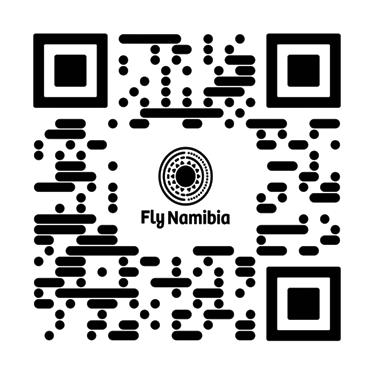
FlyNamibia Safari between Hosea Kutako International Airport and Sossusvlei, Swakopmund, Twyfelfontein, Etosha - Ongava, and Etosha - Mokuti.
that in certain areas angling and vehicles are prohibited; that angling is not allowed from 25 January to 15 April; and that overnight camping is not allowed here.
The Walvis Bay Lagoon takes pride of place as a scenic attraction in the Walvis Bay area. The tranquil body of water, its natural beauty accentuated by thousands of flamingos gathering at the rich feeding grounds, is over 3000 years old. The lagoon has been silting up for hundreds of years, a process hastened by man’s activities. Because of its value nationally and internationally as a wetland area, it was designated as a RAMSAR site in 1995, RAMSAR being a convention on wetlands held in 1971 in Ramsar, Iran. The lagoon is regarded as the most important wetland for coastal birds in Southern Africa. Wading birds including Lesser and Greater Flamingos and White Pelicans are seen here. A pleasant walk of just over 3 km leads to Lover’s Hill, which overlooks the lagoon.
Find more Namibian travel inspiration at www.thisisnamibia.com
Follow @thisis_namibia on Facebook and Instagram for extraordinary Namibia travel stories.

What potential does the hospitality industry hold for investment opportunities? This and more are on the agenda for the Africa Hospitality Investment Forum (AHIF) event happening in Windhoek in June this year. Attended by the highest calibre of international hotel investors of any conference in Africa, this is the leading hospitality investment conference on the continent.
Olivier Granet, managing partner at Kasada Capital Management, spoke to us to explain the investment potential that Namibia holds as a destination. Kasada Capital Management is an independent real estate private equity platform dedicated to hospitality in Sub-Saharan Africa.
Olivier explains why they believe Namibia is a very interesting investment opportunity as a country and tourism market: “It is one of the most sparsely populated countries in the world. It offers a unique combination of space, security and authentic nature. It attracts over one million international visitors per year, and it offers unique hospitality investment opportunities. Its tourism sector saw arrivals surge to their highest point in the past five years, growing by 16.8% in 2023, which for us makes Namibia an attractive hospitality investment destination. At Kasada, we are always looking to further unlock investment potential in the region in line with our value-adding strategy of bringing capital and expertise to the hospitality sector in key cities across Africa, while also maintaining a diversified footprint.”
Namibia stands as a solid option for investment due to its stable political climate and resilient economy. Built upon peace, stability and good governance, with good infrastructure and exciting growth in a myriad of economic sectors, Namibia is poised to reach exciting heights in the future.
Olivier feels, though, that the investment potential of Namibia has not yet been fully unlocked. “With 15% of GDP share, way above the global average of 10%, tourism is a major contributor to Namibia’s economy, creating tens of thousands of jobs (almost 20% of all employment) directly or indirectly. However, because of its unique offer as a destination, we strongly believe this can go even further.”
Kasada believes that there are ways to unlock the investment potential of Namibia, as Olivier explains: “The Namibian hospitality market has experienced limited investment activity by regional and international brands due to the comparatively smaller size of the market versus other SADC capital cities, providing investment potential for a well-positioned complex of hotels in an as yet unsaturated market. Overall, the market is somewhat immature when it comes to distribution, sales and marketing, which means there is a lot of potential for investors like us to help the market level up to international brand portfolio and distribution network standards. We think that, given that leisure travel currently dominates hospitality occupancy in Namibia, a strong public-private partnership would help unlock potential by further diversifying the industry’s reach to new international markets.”
With the hospitality market making a comeback following the pandemic and leisure and business travel demands multiplying booking rates, the sentiment is that now is a great time to invest in the hospitality industry.
Olivier shares many reasons why Namibia is an attractive investment destination: “Namibia is a politically stable country with a low risk profile and currency peg that enables hedging and entails significantly lower credit risk compared to other African nations. According to Fitch Ratings, Namibia is on par with South Africa. In addition, Namibia offers welldeveloped tourism offerings for Sub-Saharan Africa and is an attractive leisure destination. It is also expected that the African Continental Free Trade Area (AfCFTA) agreement will boost intra-regional tourism, with the added benefit of sustainability in that the country has untapped potential in renewable energy which will be a significant catalyst for foreign investments.”
If you would like to hear more about the potential for investment that Namibia holds in the hospitality industry, be sure to join the Africa Hospitality Investment Forum, which aims to connect business leaders from international and local markets, while driving investment into tourism projects, infrastructure and hotel development across Africa.
Kirsty WatermeyerSome say the world will end in fire, some say in ice” Robert Frost wrote in his famous poem Fire and Ice . While Frost views the end of the world through the lens of human emotions, it inadvertently touches upon a question that has interested scientists and philosophers for centuries. Different scientific hypotheses have suggested various potential outcomes for the universe, ranging from finite to infinite duration, and trying to explain its origins. Edwin Hubble's observations during the 1930s–1950s, which revealed galaxies moving away from each other, led to the Big Bang theory. This theory suggests that approximately 13.787 billion years ago, the universe began as extremely dense and has since expanded, becoming less dense on average. The confirmation of the Big Bang theory relies heavily on understanding the rate of expansion, the average density of matter, and the physical properties of massenergy in the universe.
One prominent theory in cosmology is the “Big freeze”, which aligns closely with Frost’s imagery of a frozen demise. This theory comes from the analogy of a geometrically open universe (a low-density universe). In this scenario, the universe will continue to expand and gradually become colder until it reaches a state of maximum entropy. Energy will be evenly distributed throughout the universe and, no meaningful process will occur. Stars will exhaust their fuel, galaxies will drift apart, and black holes will dominate the universe, which themselves will eventually annihilate. Slowly and inexorably, the universe will become darker and eternally cold. This scenario has gained ground as the most likely fate.
that this scenario is improbable but not definitively dismissed. Our understanding is limited by the short span of time over which measurements have been conducted, leaving room for future developments.
Recent observations have introduced a new contender in the cosmic apocalypse narrative: the "Big Rip." This theory suggests an acceleration of the universe's expansion to such a magnitude that it tears apart all existing structures, from galaxies to atoms, in a violent and chaotic rupture. Unlike the gradual decline of the Big Freeze or the collapse of the Big Crunch, the Big Rip is aggressive. While the current rate of acceleration, as defined by the Hubble constant, is insufficient to dismantle local structures like galaxies, it does pave the way for increased spatial distances between them. However, if the Hubble constant keeps increasing, everything in the universe, from galaxies to tiny particles, would break apart. This would eventually lead to a point where energy density, scale factor, and expansion rate become infinite, resulting in a singularity that signifies the universe's end.
Some say the world will end in fire, Some say in ice. From what I’ve tasted of desire I hold with those who favor fire. But if it had to perish twice, I think I know enough of hate
To say that for destruction ice Is also great And would suffice.
- Robert Frost
Conversely, there is the “Big crunch” hypothesis, reminiscent of Frost’s vision of a fiery end. This scenario arises from the analogy of a closed universe, where parallel particles will converge just as the lines of longitude at the North and South poles. The big crunch hypothesis is a symmetric view of the ultimate fate of the universe. Galaxies, stars, and even atoms will be drawn together by the pull of gravity. As the universe contracts, the temperatures will rise, culminating in a cataclysmic inferno that consumes everything in its path. A straightforward projection suggests that all matter and space-time could collapse into a dimensionless singularity, mirroring the conditions of the Big Bang that initiated the universe. However, at such extreme scales, quantum effects come into play, introducing complexities that defy simple estimations. Recent observations indicate
The Big Bounce is another hypothesis, which is pretty unpopular. This theory suggests that the universe's origin is part of a cycle, where the collapse of a previous universe led to the beginning of our known universe. One version of the Big Bang theory initially proposed that the universe started from infinite density, which appeared conflicting with established theories like quantum mechanics. In response, an alternative viewpoint emerged from quantum mechanics, suggesting that the universe came into being through a quantum tunnelling event, starting with a density consistent with quantum principles before evolving under classical physics. If the universe is closed, this theory suggests that once our universe collapses, it might give rise to another universe, similar to the Big Bang, either through reaching a universal singularity or due to a repulsive quantum force causing expansion again!
While these theories are fascinating, it’s important to note that our understanding of cosmology is incomplete, and these are just speculations. However, observations, experimentation, and theoretical refinement are being carried out everyday in hope of improving our understanding of the universe. In the end, whether the universe ends in fire, ice, or some other unimaginable fate, one thing remains certain: humanity's quest for understanding will endure.
Victoria Nakafingo









When Francois de Necker passed away recently he returned to his source, for death is nothing but the origin of life, as life is the compensation of death. His inventive brilliance flowed from his creative imagination, which had no beginning and no end. Francois challenged and changed the aesthetics and epistemology of earlier romanticised and realistic landscape art in this country. Over time, he developed a style and iconography that were his own, drawing from a diversity of sources that included the cosmology of the Bushmen/San, the spirituality of Africa and tenets of abstract expressionism, notably the juxtaposition of brightly coloured forms and symbols. This deployment of form and colour was calculated to evoke a sense of harmony and to represent outer and inner spaces.
Many of Francois de Necker’s paintings are meditations on life and celestial time. His last works, done shortly before his death, are delicately impressive, for the artist managed to compress the range and beauty of his art into small canvases. These speak to his boundless imagination and are deeply moving and radiant, laden with symbolic import.
Born in Vrede, South Africa, Francois attended art schools in Johannesburg that were modelled on the “academy” as it had emerged in European cities in the early modern period. From his initial encounter with the former South West Africa, now Namibia, in 1970 as an art teacher, his return to South Africa to lecture on art at the University of Pretoria, and his subsequent return to Namibia in 1981, he actively contributed his finely honed technical skills and passion for teaching to build local art education and art communities, offering art workshops, lecturing at the University of Namibia (UNAM) and networking with artists in this country and beyond. His works included paintings in oil, watercolour, acrylics, graphics, murals of discarded wood and metal pieces, as well as free-standing sculptures of metal and wood.
The freedom of his will to paint “landscapes of the mind” made Francois a visionary, sensitive outsider. Francois got the foundations of his art right from the careful selection of paper to the rendering of space and values, and often painted on the floor of his studio so as to have an allround perspective. Artmaking was both determinate and determined. The act of painting mattered. It was the artist’s response to the art of living.
One of the foundations of his art was the way in which he used colour. While the subject of many of his works was landscape, his paintings were really about colours, moods, space, symbols, values and textures of silence suggested by the landscape. His last exhibition, at the Project Room in late October 2021, was appropriately titled Recollections in Colour. In his later works, the artist increasingly abandoned recognisable imagery, consequently the paintings owe their expressive force to the juxtaposition of different primary and secondary colours: yellow, purple, red, orange, green and blue. He had a unique command of colour. His works abound with radiant colour harmonies and shapes that make for a sensitive balance between visuality and textuality.
The artist was prodigiously productive and left a versatile and inventive body of work in public and private collections in this country and beyond. What remains is enough to demonstrate the true genius of Francois de Necker, who lived to paint.
Alida, his widow, was his constant inspiration, best friend and critic.
Adieu Francois!

André du Pisani
The Project Room - Namibia www.theprojectroom.com.na




Have you noticed how so many people are talking about how tired they are? It is as if a cloud of tiredness has descended upon society. When a popular local radio station recently asked people to come up with their podcast name based on their mood, “tired” was an exceptionally common response. According to the science folk, there is a reason for that, and it has to do (once again) with what society went through during the Covid-19 pandemic. For almost three years, the one thing we all had in common was our lethargy. Lying around on the couch, reaching only for the bag of potato chips or the TV remote. We waited, stuck in Groundhog Day mode, and while we did so, our mood became increasingly listless. What started as anguish gave way to languish, that indifferent space between thriving and surviving. It is here in this middle ground where we find that depression lurks beneath the surface.
Languishing is also known as “the neglected middle child of mental health”, a term coined in 2002 by sociologist Corey Keys. His research found that it is not the people expressing their symptoms of depression who will experience major depression and anxiety disorders in the next decade, but rather those who are languishing. On the mental health continuum, languishing is found at the midpoint. It is not the same as depression; rather, it is a place of emotional distress. You can function when you languish, but there is a decline in your mental wellbeing. Writing for the New York Times, Adam Grant compares languishing to “looking at your life through a foggy windshield”.
Psychologists say that a winning strategy for managing emotions is to name them. In the height of the pandemic, the most popular Harvard Business Review article was one that looked at grief. Its popularity has been attributed to the fact that this was a look into what people were most commonly feeling at the time. Being able to understand that it was grief we were feeling helped us to move beyond the feeling. We should therefore not discount the value of therapy. If naming an emotion helps, imagine what an hour spent naming all your feelings can do?
Another thing you can do to overcome the feeling of “bleh” is to give yourself some uninterrupted time. The emphasis must be on no interruptions, because we live in a time where we are too easily accessible and this means people think we are always available, which is exhausting. Besides, when we are not being distracted, we gain the freedom to focus and as people we find joy in experiences that capture our full attention. Treat uninterrupted blocks of time as treasures to guard.
On the mental health continuum, languishing is found at the midpoint. It is not the same as depression; rather, it is a place of emotional distress. You can function when you languish, but there is a decline in your mental wellbeing.
This is not meant to overburden you with yet another thing to worry about. Instead, it is meant to provide you with a way out of feeling “bleh”. So what can you do?
Being aware of our state of discontent, perhaps we can learn to answer more honestly when asked how we are. Perhaps we can talk about our languishing as the tonic to toxic positivity, which tries to put a spin on the truth of how we really feel, pressuring us to be upbeat all the time.
The opposite of flourishing, that state of feeling connected and purposeful, is languishing. But remember, you are not alone in feeling this way – many people are feeling languid because this was our common state of being for almost three years. Once you are in this position, it is hard to simply bounce back into a state of connecting and vibing. It is going to take time and effort, but we can most definitely light the path out of the void.
Kirsty Watermeyer

Taking the stress out of air travel WITH BABIES, TODDLERS AND CHILDREN
Travelling with children can bring an extra layer of stress to the journey, especially when underprepared. Children will find a way to lose shoes or get hungry at the most inconvenient times. However, it is possible to avoid many of the stress inducers when it comes to travelling with children. We have rounded up a list of things to know about air travel with children that will hopefully make your trip easier and more enjoyable. Remember too that if you are travelling alone with little ones, you can get special assistance from the ground staff to help you through customs and get your bags. Just be sure to let the airline know before you travel by sending an email to info@flynamibia.com.na
At what age do you pay for children’s plane tickets?
• Once your child turns 12, you pay full adult airfare prices.
• If your child is 2-11 years old, they qualify for child rates.
• If your child is under 2 years old, they qualify for infant rates and can sit on an adult’s lap. If you need a separate seat for your infant, it is a different rate and you need to provide your own infant seat for travel.
What are the rules regarding bottles for babies or snacks for toddlers when travelling on a plane?
You can take snacks for toddlers along with you on a flight, and as far as many parents are concerned it is an absolute must-do to keep the little ones occupied. Already mixed baby formula and breastmilk not exceeding 2 litres and stored in bottles are allowed on board your flight.
Can you take a stroller with you on the plane?
You can take a stroller or car seat with you, but these items may not exceed 32 kg or a total dimension of 155 cm. Your stroller should be foldable and compact when fully folded and these items must have at least one flat surface. Also worth noting is that your stroller can be sky checked at the plane when you board while your car seat is checked in with your luggage.
What documents do you need to take with you when travelling with children or babies?
• For all international or regional travel, you need a valid passport for your child.
• For all international, regional and domestic travel, your child needs to travel with an unabridged birth certificate if they are under 18 years of age.
• If your child is travelling with only one parent, you will need written legal consent from the other biological parent.
• If the child is travelling with someone who is not a biological parent, they will also need an affidavit from the biological parents giving consent that they can travel with the accompanying adult.
• Also worth noting is that newborn babies may not travel under the age of 7 days old, and that the parents of newborn infants must present sufficient proof of parenthood at the check-in.
• Children under 5 years of age are not permitted to travel alone.
• It is the responsibility of parents or guardians to complete all necessary travel and immigration documents.

Check out FlyNamibia's Conditions of Carraige for more information: www.flynam.com
Here is a list of hacks which moms found most useful when travelling with their children. Perhaps what worked for them will work for you.
Wear your baby – Stephanie Hopkins
A baby carrier is a great choice for air travel. It gives your child an instant sense of closeness and frees your hands. As Stephanie explains, “We prefer babywearing to get our children through the airport so that our hands are free to manage everything else.”
Ear pressure control and earphones – Marie-Jeanne Ndimbira-Rosner
“I have found that it helped my child’s ear pressure to be drinking something as we took off. To ensure that my child would take a bottle when she was very young, I would not give her a bottle until take-off. Then when she got to toddler age, I found that bringing her earphones along was critical as standard plane earphones don’t fit little ears and a little screen time on a flight gives you as the mom a necessary break.”
Snacks and something to sleep on – Trixi Malan
“Snacks are the first thing you need to take along when travelling with a toddler. Other things that have helped me are taking along toddler headphones and, depending on the length of the flight, a blow-up travel mattress. It also helps to choose a night flight for longer distances.”
Layer up and avoid laces – Maria Haskin
With many temperature changes on longer flights, it’s always good to dress your kids in layers for the journey. Shoes with laces are a hassle especially at the security checkpoint. As Maria explains, “Pick shoes that come on and off easily and pack socks. Planes can get chilly sometimes, and socks can help keep those baby toes warm.”
No aisle seat for the little ones – Nangula Paulus
“An aisle seat is an escape route for little ones, meaning you’ll be off your seat more than you’re on it as you chase after them. Window seats are far more advisable as it gives them something to look at and keeps them away from things like hot coffee as it passes on the beverage carts.”
Pack entertainment or become the entertainment –Elzanne McCulloch
“Pack entertainment like books and stickers. A dummy for take-off is helpful because if they suck on it their ears don’t pop and hurt. Ziplock bags have many uses on flights, for example a place to put dirty nappies or wet clothing.”
Kirsty Watermeyer



Scientific name: Adansonia digitata
Common name: Baobab
One of the biggest trees in Namibia is the baobab. It stores water in its giant trunk as an adaptation to our arid climate. A particularly huge baobab in Outapi, known as the Ombalantu Baobab Tree, has a spacious cavity in its trunk which is said to be able to accommodate about 35 people. It was used as a hideout during the pre-independence war and it has also served as a chapel. This baobab’s unique history and features have made it a popular tourist attraction.
Baobab trees are found in the northern parts of Namibia, from the western and central north to the Kavango and Zambezi regions in the east. The tree has soft wood and regenerates easily when it is cut. It flowers from October to March. The large flowers resemble those of hibiscus plants, but baobab petals are always pure white with an extended stamen and strongly scented.
The flowers grow at the tip of long hanging stalks. They contain sweet nectar. I remember that the elders used to stop us children from plucking the flowers to suck this sweet nectar. We did not know then that nature’s plan is for the flowers to develop into fruits. The leaves have 5-7 leaflets. The fibrous wood of the trunk was among the survival supplements that farmers fed to their livestock during the 2019 drought. In fact it is an ancient survival strategy practiced during droughts. The fibre is also used to thicken goat milk: small pieces cut from the stem are peeled and added into the milk while the wood is still moist. Dried pieces can also be used but the moist fibre is preferred.
piece that you suck on will melt in the mouth. The dry pulp is often pounded to use as a powder. The kidney-shaped seeds are brown and hard. They contain essential nutrients, including a healthy fat which can be extracted by cold pressing for cosmetic uses. Baobab oil is said to have antiaging properties.
Because of its nutrients and fibre the baobab fruit is seen as a superfood. The powder of the pulp can be used to make juice, ice lollies and soft porridge. Solid pulp is often soaked in water, after which the fibres and seeds are removed. The remaining pulp is then suitable to make whatever is desired. Add sugar, milk or other ingredients according to your liking. Several locally crafted baobab products are available. I had a taste of baobab juice blended with ginger. And packaged baobab powder is so convenient to make my own juice and ice. Familiar as I am with the taste, it is always an appetising experience.
Because of its nutrients and fibre the baobab fruit is seen as a superfood. The powder of the pulp can be used to make juice, ice lollies and soft porridge.
Traditionally, women used fibres from within the bark to form one strong strand onto which they put beads, meant to be worn around as a necklace or belt. The fruits develop from April to August. Once they are completely dry they are ready to be eaten. Some fruits may fall off when they are dry but usually the children “harvest” them by throwing stones. The tree sheds its leaves as the fruits dry and stands with bare branches and the fruits.
Baobab fruits are generally oval, though some are more oblong. The size varies. On average it is that of a mediumsized pineapple. Baobab fruits have a hard brownish outer shell which is about 0.5 cm thick and covered with tiny hairs which cause itching on the skin. The fruit can only be cracked open with the help of a hard object such as a stone. It is filled with pieces of solid white pulp and usually contains seeds. A
It is a privilege to be a member of the African Baobab Alliance (ABA) – an alliance that brings together institutions, organisations, researchers and even individuals in the baobab chain from tree to value addition as well as research. Some of the current research work examines the effects of baobab fruit powder on gut health. It aims to perform a randomised double blind placebo controlled trial to study the effects on obesity. Another aim is to assess the effects of baobab fruit powder on cardio metabolic health parameters. The hypothesis is that baobab fruit powder will improve gut function, bacteria and reduce metabolic disease risk. This sparked so much enthusiasm in me and inspired me to add baobab juice or packaged powder for our shelves.
The African Baobab Alliance hosted the 3rd Global Baobab Congress in London, UK, on 16 April. The congress facilitated networking of stakeholders in the baobab industry during the baobab harvesting season. Have I tried planting a baobab tree? Yes! Easy: just a seed to nourish with sufficient water and allow sunlight to do its part. Sprouts of the mopane tree and baobab are quite similar. However, I observed that the baobab seedling is able to go without water for months. In the village experience, the seeds germinate very well after a good amount of rainfall. They are the seeds which we throw onto our crop fields when we snack on this superfruit.
Agnes Shekupe Shivute
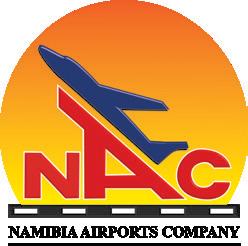
The Walvis Bay International Airport is the second major gateway that is developed and managed by NAC. The Airport is strategically located in the dunes of the Namib Desert about fifteen (15) kms from the harbor town of Walvis Bay. The Airport will give you easy and timely access to the mesmerizing Namibian coastline which also hosts the historic town of Swakopmund as well as the famous dunes in the Namib Desert.
Boasting a revamped state of the art terminal building opened in 2016, the Airport handles daily flights to Windhoek, Johannesburg and Cape Town, while enjoying the spectacular scenes of the Namib Desert, the world’s oldest desert.
Walvis Bay International Airport is a prime leader in cargo handling for marine, coastal and mining activities in the area.
For travel schedules and more, contact the airport information office at: Tel: +264 64 271 100 | Email: communications@airports.com.na Find us at and www.airports.com.na
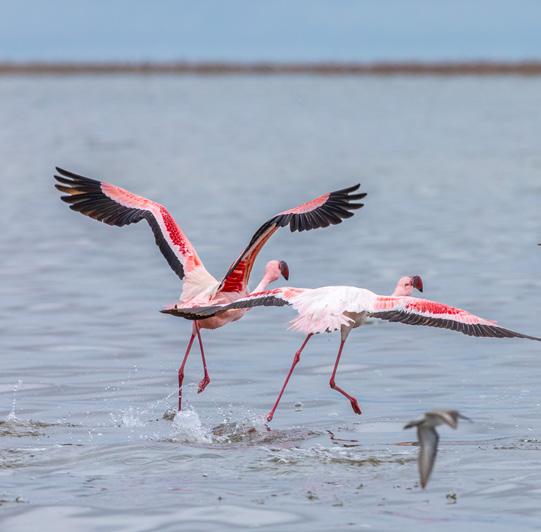
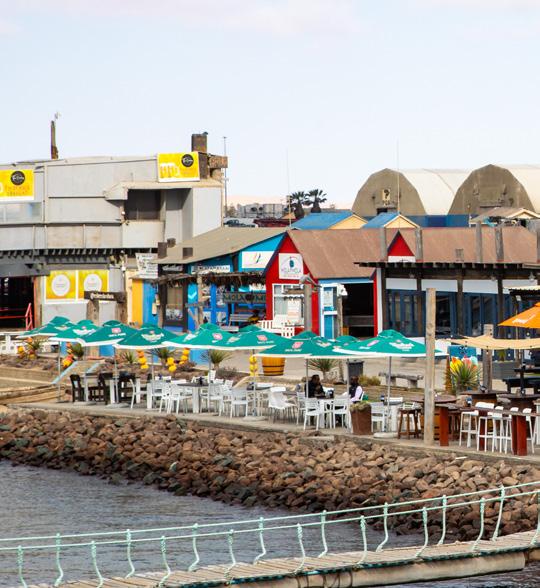




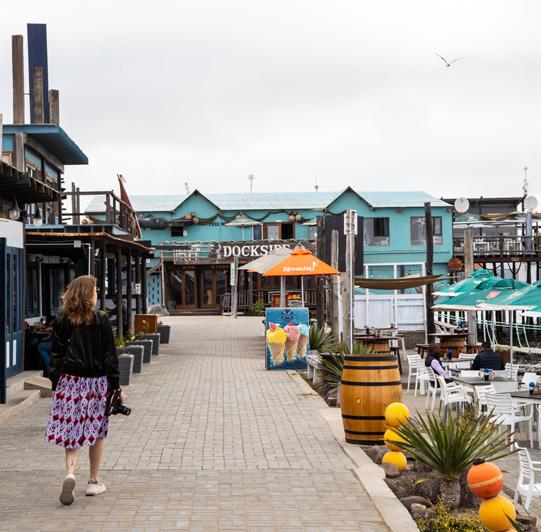



Venturing across borders and welcoming Namibian-bred talent, the Francisco Carolinum art museum in Linz, Austria, opened its doors to a transformative experience from 21 March. Margaret Courtney-Clarke’s Dust on the Wind exhibition is a soul-stirring journey through the lens of a visionary photographer, and is a remarkable advocacy for Namibian talent to European audiences.
The exhibition serves as a poignant invitation extended by Courtney-Clarke, a multi-award-winning artist, to delve into realms often overlooked yet profoundly impactful. Drawing from over four decades of work across African landscapes, the essence of Dust on the Wind lies in its ability to challenge preconceived notions and inspire a renaissance of thought.
Initially unveiling glimpses of her exploration into the creative realms of indigenous African women, the exhibition elegantly transitions to the terrain of Namibia, Courtney-Clarke’s birthplace. Here, her acclaimed publication Cry Sadness from the Coming Rain echoes the resilience and challenges intertwined with the fabric of Namibian life.
Eschewing the clichéd imagery of untouched wilderness, Courtney-Clarke captures the stark realities faced by communities navigating the arid landscapes of the Namib
and Kalahari deserts. Through her lens, viewers are confronted with narratives that echo the trials of environmental degradation, intensified by the relentless grip of climate change and extractive industries.
Caged, a compelling ongoing project within the exhibition, is a poignant reflection on the encroaching boundaries that redefine Namibia’s natural and human landscapes. Fences and pens that once seemed innocuous now serve as poignant symbols of confinement and disruption, embodying the broader socio-political complexities shaping the region.
At the core of Courtney-Clarke’s artistic journey lies a profound commitment to amplify the voices of the marginalised and to shed light on socio-political injustices. Her images transcend documentation; they become vessels of empowerment, resilience and hope. Through her lens, ordinary lives are rendered extraordinary, inviting viewers to reexamine their perspectives and embrace the poetry inherent in existence.
Curated by Virginia MacKenny, Dust on the Wind is a testament to the power of art to provoke, enlighten and redefine our collective narrative. As visitors traverse through Courtney-Clarke’s captivating visual world, they are invited to witness the beauty and complexity of human existence, resonating with echoes of endurance, wonder and a renewed sense of empathy.
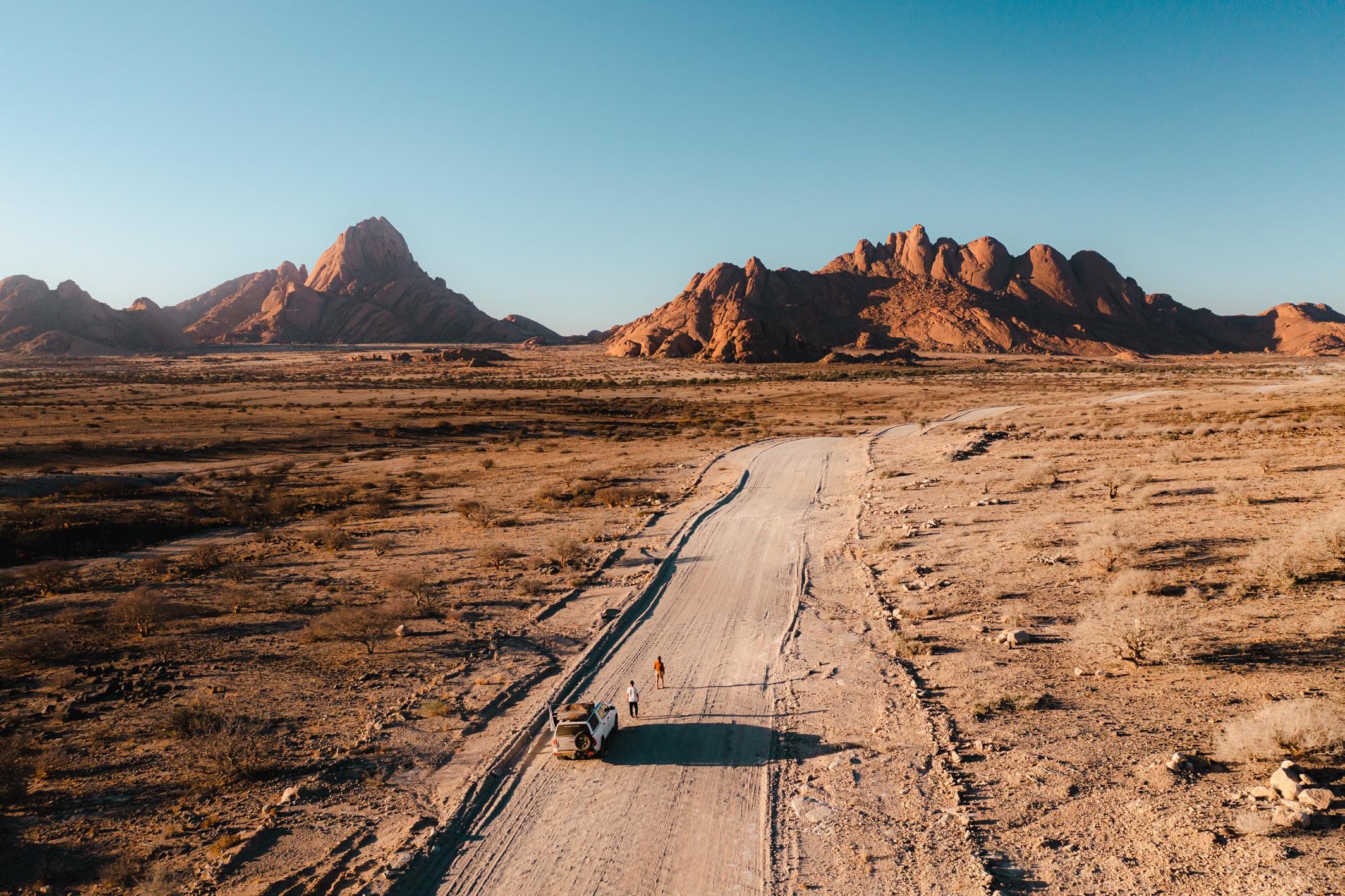




Okambulumbumbwa – a herdsman’s best friend
This musical instrument is ubiquitous in many layers of bantu society such as the Aawambo, Kavango, Ovaherero, Zemba and even the Khoekhoe
As is the case elsewhere in Africa, the use of musical instruments in Namibia is very specific to customary norms. This means that the name of an instrument in a particular vernacular specifies its construction, the taboos attached to it, as well as the meaning and practices regulating its use.
The okambulumbumbwa (braced bow with resonator) is one of the common instruments in northern Namibia, especially amongst the Aawambo people. This musical bow is very similar to the braced mouth-resonated bow, except that it has a resonator attached.
The wooden bow is about one metre in length. A sinew or string is looped around both the bow and the string. It pulls the string closer to the bow stave, thus dividing the string into two unequal lengths, or two almost equal lengths, depending on custom.
thereby changing the tones. The left hand grasps the stave to stabilise it against the chest and also stops the string in order to create further fundamentals. This is done by touching the string lightly with the index finger, while the thumb nail works as a stop.
The little finger is able to move the brace slightly for “fine tuning”. Okambulumbumbwa players usually have a clear mental image of the exact tones they want. New players would have to develop an ear for the sounds. The player may create a deep vocal drone, also resonated by the gourd. A player from Ohangwena in the north of the country, Kalilo Nghishakenwa, is able to play a melody of six different tones.
The okambulumbumbwa is one of the common instruments in northern Namibia, especially amongst the Aawambo people.
A small hole is drilled into the other end. Through this a string is passed, looping around the stave and back through the gourd, where it is secured with a small twig. The resonator may be placed more or less in the centre of the bow or to one side. A little pad of cloth or fibre is often fixed between the bow and the resonator to prevent unwanted rattling.
The bow is held either vertically or horizontally, with the string facing away from the player. The resonator gourd is firmly pressed to the chest or stomach, while the string is struck on either side of the brace with a small wooden stick held in the right hand. The gourd opening can be adjusted,
This instrument is played primarily for self-delectation, although other people such as members of a family group may enjoy listening as well. The okambulumbumbwa is usually played by men, either when sitting around the fire or when herding cattle. The Aawambo people, who live a harsh existence for the wellbeing of their livestock, are known to be good okambulumbumbwa players.
For most people, the music of this instrument deals with aspects of their daily lives, such as their animals, and in many cases the singing which accompanies the playing may describe an aspect in the life of a cattle herder, as was the case with some of the songs which Nghishakenwa performed for the writer.
Marx Itamalo
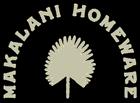
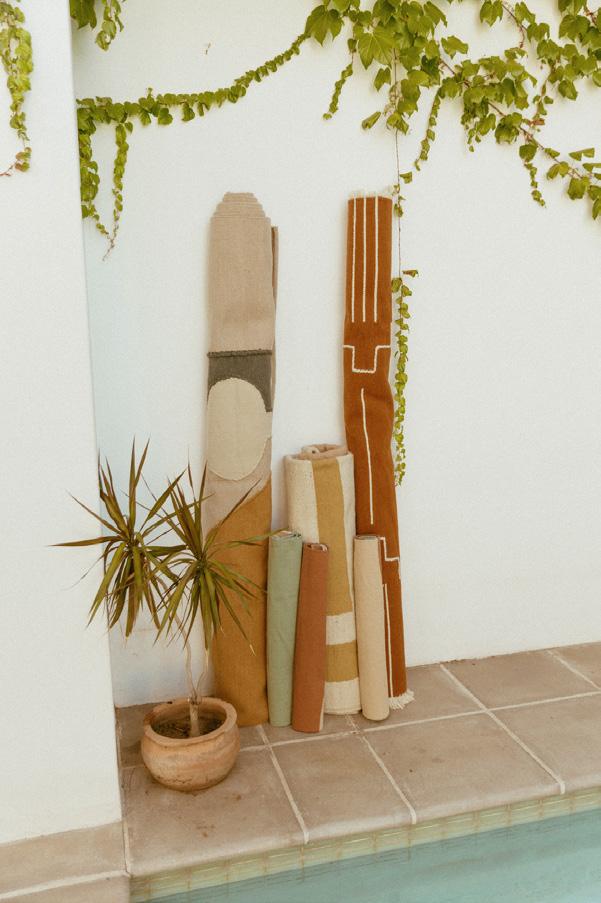
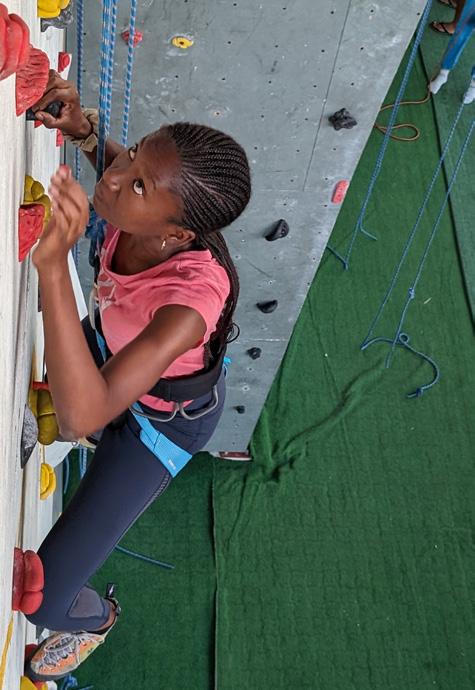
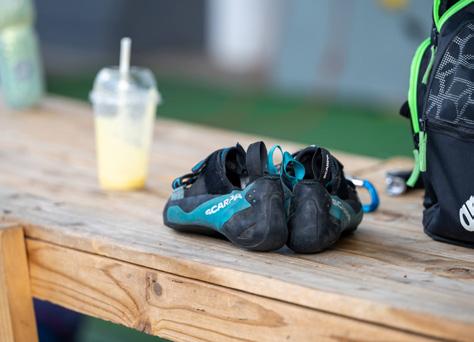

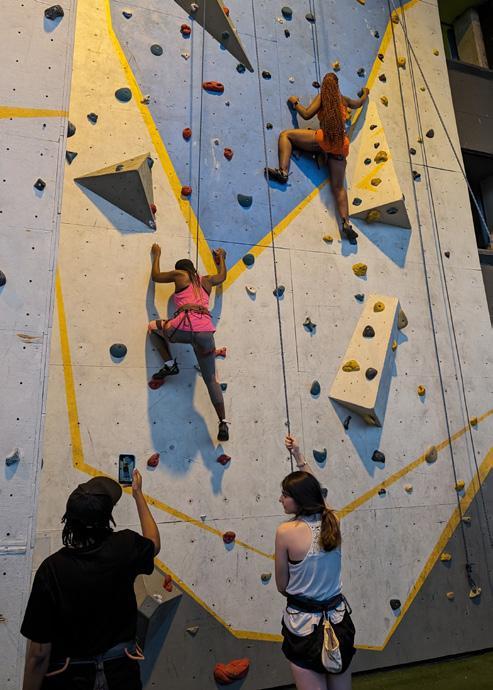

Join our growing climbing community or just pop past for a climb while you’re in town - we welcome climbers of all ages and skill levels. Find us on level 1 of the Checkers parking area at Maerua Mall underneath Virgin Active, 7 days a week.





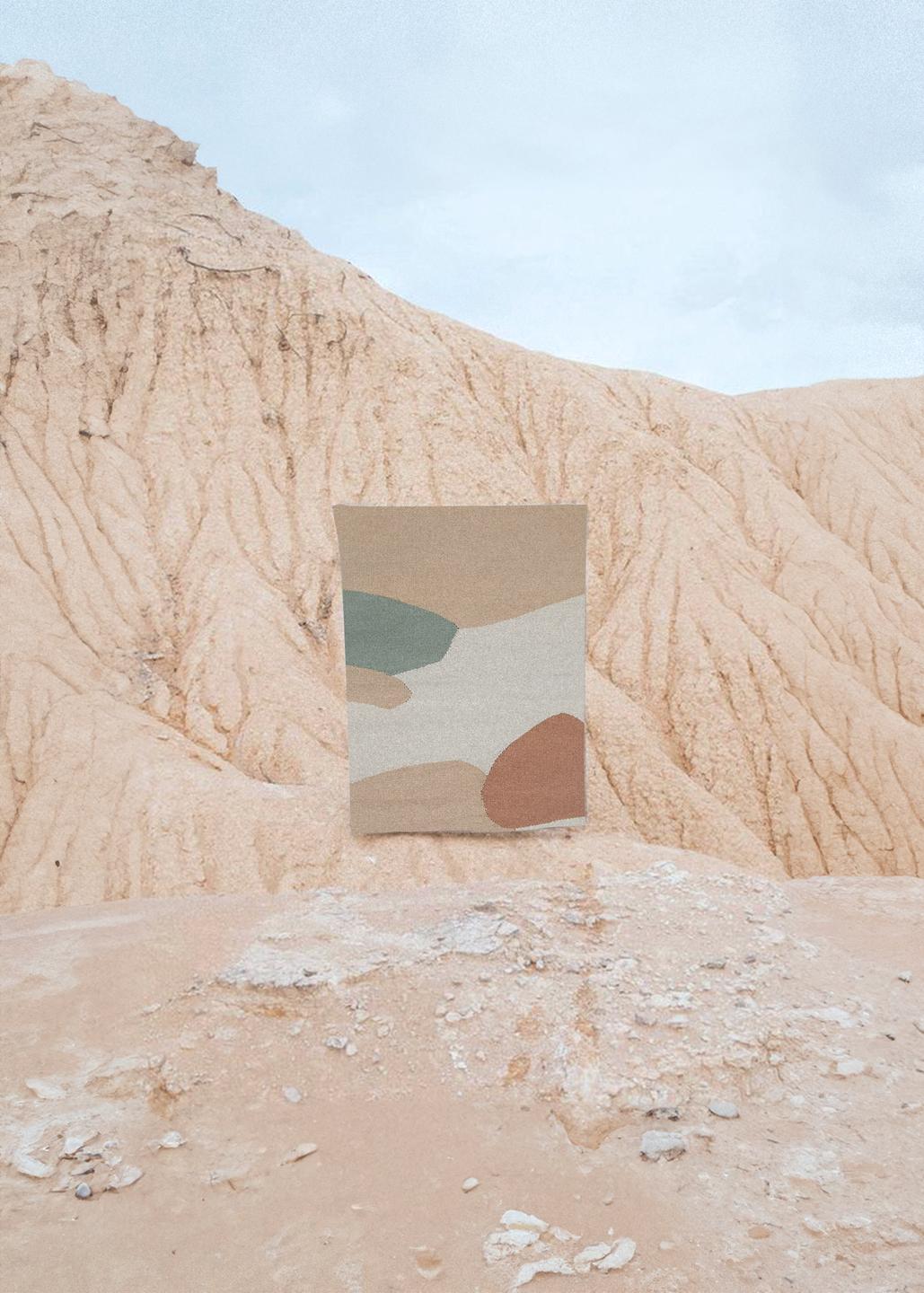



The elderly are a reservoir of skills and accumulated experiences, a most precious national asset and a source of wisdom, experience and guidance. When we care for our history, they become the torchbearers for preservation of our traditions and culture. However, often cast aside, the elderly can suffer loneliness and isolation, which has an adverse effect on their mental and physical health.
An example of care for the elderly was recently witnessed when Debmarine Namibia extended food and other essentials to residents of the Katutura Old Age Home. The decision to make this donation came after Debmarine Namibia was recognised as Namibia’s top taxpayer last year. Due to a tax contribution of N$4.2 billion, Debmarine Namibia was awarded with the first prize and decided to donate their winnings to the Katutura Old Age Home.
Their support of the Katutura Old Age Home underscores the company’s belief in caring for those who have paved the way for future generations and was applauded by NamRA’s commissioner, Sam Shivute. Outlining the synergy with NamRA’s ethos of impacting the livelihood of every Namibian, Shivute expressed his gratitude to Debmarine Namibia, saying, “Your value, teachings, wisdom and experience is the foundation on which our society stands.”
When we care for our history, they become the torchbearers for preservation of our traditions and culture.
Speaking to members of the Katutura Old Age Home at the handover, Debmarine Namibia’s CEO, Willy Merten, outlined that the recognition from the Namibia Revenue Agency (NamRA) to Debmarine Namibia as the top taxpayer in the country is an honour which reflects the company’s dedication to contributing to the growth and prosperity of Namibia.
Bernhard Stradicke, a resident of the home, expressed heartfelt appreciation on behalf of his fellow residents, acknowledging Debmarine Namibia and NamRA for their thoughtful support.
The greatest need of the elderly is to feel valued, loved and appreciated. This act of kindness by Debmarine Namibia serves as a reminder of the great impact we can all make in the lives of others and that caring about others is a heroic act in itself.



The Bank of Namibia’s Monetary Policy Committee (MPC) has decided to maintain the Repo rate unchanged at 7.75%, citing sufficient reserves and stable domestic economic activity throughout 2023 and early 2024.
Bank of Namibia Governor Johannes !Gawaxab said that as of March 2024, Namibia’s international reserves decreased to N$54.3 billion from N$55.8 billion in January 2024, attributed to commercial bank outflows and government payments.
“This remains sufficient to sustain the currency peg between the Namibia Dollar and the South African Rand while meeting the country’s international financial obligations. The import cover, excluding hydrocarbon exploration-related imports, however, stood higher at 4.3 months,” he said.
“March 2024 saw inflation at 4.5%, down from 5.4% in January. Predictions suggest a further decrease to 4.9% in 2024, with geopolitical tensions and rainfall uncertainty influencing this slight adjustment,” !Gawaxab said.
Standard Bank has unveiled a proposal to convert Elizabeth Bay into an Energy Park. The move is seen as crucial to stimulate infrastructure development and tap into Namibia’s resource potential.
“The primary objective of the Elizabeth Bay Energy Park (EBEP) is to harness the region’s abundant wind and solar

resources. This will enable efficient production, storage, and exportation of energy products such as LNG and green hydrogen,” said Paul Eardley Taylor, Head of Oil and Gas for Southern Africa at Standard Bank.
The plan also encompasses future activities like the processing of associated gas from deep offshore fields and the development of upstream oil projects.
NAMIBIA RANKED 6TH MOST CONNECTED COUNTRY WITHIN SUB-SAHARAN AFRICA
Namibia is highly ranked in Sub-Saharan African connectivity, ranking sixth out of 43 countries in the DHL 2024 Global Annual Connectedness report, surpassing established economies like Senegal, Angola, Nigeria, and Kenya.
The index is for metrics like internet access and mobile network coverage. “Namibia has made significant progress in global connectedness, moving up 27 spots to rank 102 out of 181 countries globally in 2023. I wish to emphasise that while Namibia is advancing in the Global Connectedness Index, more efforts are needed to thrive in the competitive global landscape,” said Dirk van Doorn, Managing Director of DHL Namibia.
Although the share of global trade in world GDP reached a record high in 2022 before a modest decline in 2023, trade growth is expected to accelerate in 2024. Information flows globalisation has surged over the last two decades, but recent data shows a stall, partly due to US-China tensions and restrictions on international data flows.

The Namibia Statistics Agency (NSA) says recreation and culture witnessed a significant 9.6% increase in annual inflation in March 2024. NSA said similarly, hotels, cafés, and restaurants experienced an 8.0% inflation rate, encompassing various aspects of hospitality services and dining experiences.
According to the Consumer Price Index the annual inflation rate for March 2024, stood at 4.5% compared to 7.2% recorded in March 2023, depicting a downward trend since January 2024.
Meanwhile, the alcoholic beverages and tobacco category saw a notable jump in inflation rates, reaching 6.8%, underscoring escalating prices of alcoholic products and tobacco items.
While in March 2024, the inflation rate for food and nonalcoholic beverages stood at 4.9 per cent, compared to the 14.6 per cent observed in March 2023. Housing, water, electricity, gas, and other fuels increased to 3.4 per cent during March 2024 compared to 3.0 per cent observed in March 2023.
Transport experienced a decrease year-on-year (y-o-y) to 4.3% compared to 9.2% while the operation of personal transport equipment increased by 3.9% compared to an increase of 12.5% and public transportation services by 0.6% while last year it had increased by 1.0% in the same month.

Namibia has emerged as Africa’s second-fastest-growing market and fifth in the world in terms of foreign direct investment (FDI), with GDP growth forecasted at 2.7% in 2024, according to FDI Intelligence.
This comes as the Bank of Namibia (BoN) stated that the oil and gas sector yielded N$33.4 billion in foreign direct investment (FDI) inflows between 2021 and 2023.
According to the Bank’s Governor, Johannes !Gawaxab, these investments, with the potential to double the country’s gross domestic product (GDP), resulted from a massive oil discovery in 2022 and will position Namibia among the top 15 oil-rich countries globally.
Similarly, Namibia recorded a surge in foreign direct investment (FDI) during the first two quarters of 2023, reaching a record N$19 billion, attributed mainly to oil and gas investments and the acquisition of Namibia Breweries by Heineken.
The figure accounted for 16.83% of the country’s gross domestic product (GDP), surpassing any annual inflow on record, according to Catalyst Investment Managers.




We love seeing your journeys with FlyNamibia on Instagram. Keep Tagging!
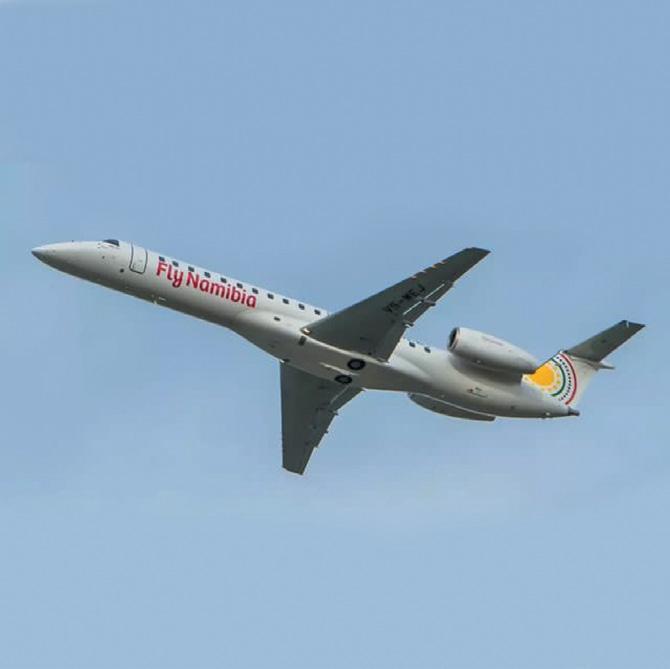




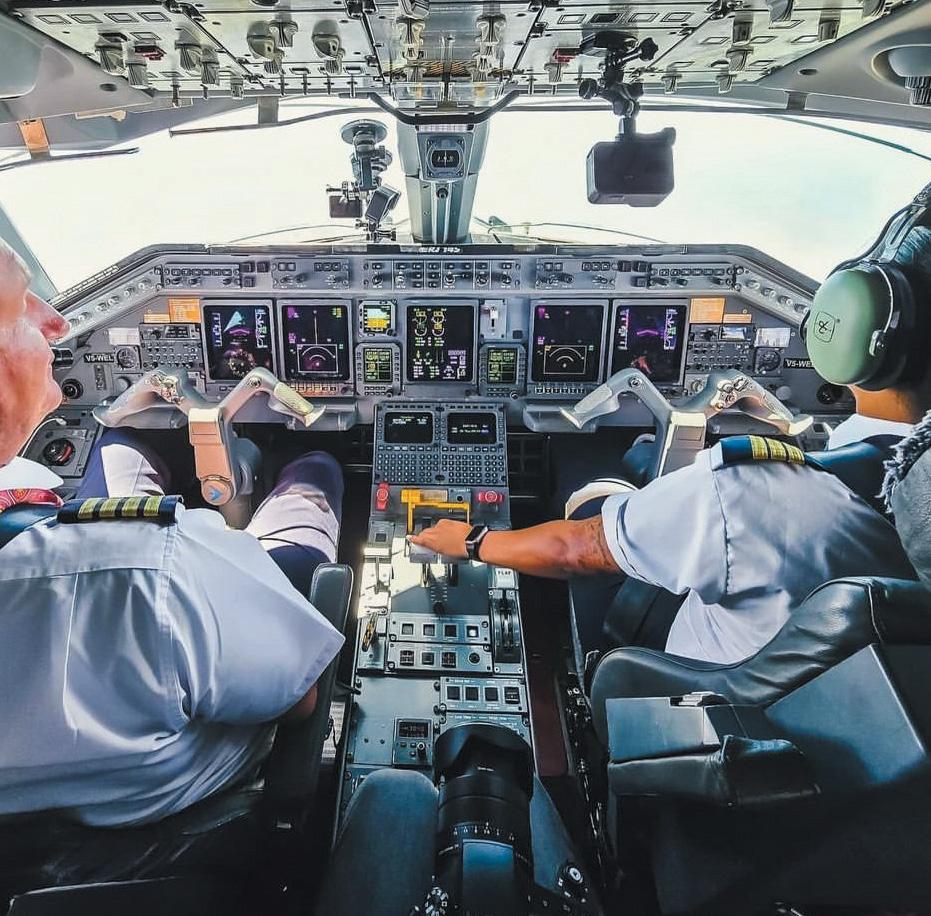

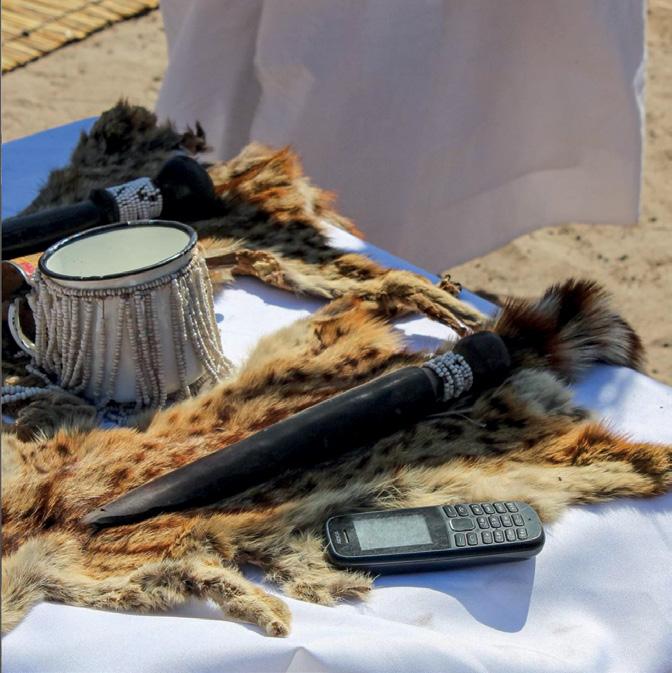
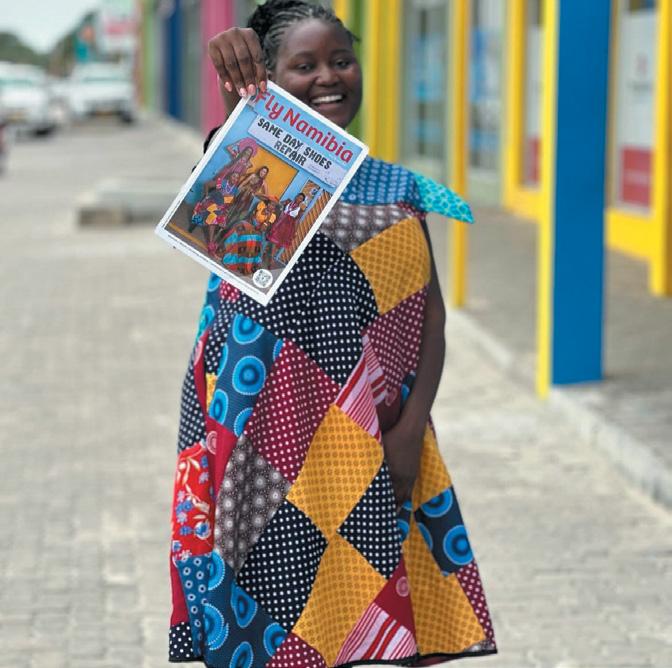

We all know incredible stories of how artificial intelligence (AI) is bridging barriers and enabling things that seemed impossible only a few years ago. This does not make it any less scary, as we grapple with questions around job security and the future of doing business. Fact is, whether we like it or not, the technological revolution is happening. Today AI can do things like detecting illnesses by smelling a human’s breath, or identifying gas leaks through the same skill of smell. AI can do something called “machine vision”, where machines are able to “see” the world and analyse what they “see”. This machine vision is used in self-driving cars, facial recognition for police work and predictive maintenance in manufacturing.
While we consider what these technological advancements mean for us as a society, we are made aware of some truths that have been with us since the dawn of the internet. One being that content you share online does not belong to you. As the saying goes, if you are not paying for the product, you are the product, and currently we are not paying for much of our online technology. This is why privacy has become the new luxury in our data-saturated economy.
This does not sit well with content creators as they ask if their online intellectual property still belongs to them. Late last year the New York Times sued Microsoft and OpenAI over the use of their content in ChatGPT. A key concern when it comes to AI and content creation is the question around copyright. If AI creates a song, who owns the rights to that song? Additionally, if AI generates content that infringes on trademarks or copyright, who do we hold liable and how?
or any other technology, they may struggle to adapt and learn future technologies.” Wiedow also shares a staggering statistic: “According to the World Economic Forum, over half of the world’s young people will end up in jobs that haven’t been created yet.”
While we consider these and other factors around a future that is upon us, we need to address our universal fears about AI, the most common being: will AI turn against us? Writing for Big Think, Allan Dafoe, associate professor at the Future of Humanity Institute at the University of Oxford, explains, “If we govern AI well, there’s likely to be substantial advances in medicine, transportation, helping to reduce global poverty and [it will] help us address climate change. The problem is if we don’t govern it well, it will also produce these negative externalities in society. Social media may make us more lonely, self-driving cars may cause congestion, autonomous weapons could cause risks of flash escalations and war or other kinds of military instability. So the first layer is to address these unintended consequences of the advances in AI that are emerging. Then there’s this bigger challenge facing the governance of AI, which is really the question of where do we want to go?”
According to the World Economic Forum, over half of the world’s young people will end up in jobs that haven’t been created yet.
Still, we cannot ignore that AI is here to stay, and as such we need to adapt to a world alongside AI. Robotschool is the first Namibian “robotics hardware and software school for kids of the future”. Founder of Robotschool, Bjorn Wiedow, says, “Our take on artificial intelligence in education is that it has the potential to enhance personalised learning, adapt to each child’s pace and provide real-time feedback. It can foster critical thinking, creativity and problem-solving skills from an early age. AI can transform education into a dynamic, engaging experience tailored to each child’s unique needs, fostering lifelong learning. If children don’t learn AI
I had a few conversations with Namibians who are using AI to make their work life easier. One of them, videographer Sky Ilifa, will blow you away with the things he can do today when editing videos with the help of AI. Things that would have taken specialised skills in the past, can now be done in mere minutes. However, as a student, he feels that if we hand over all our content creation work to software like ChatGPT we will lose the ability to think critically in the long run, as it is in the process of our own research and verification that we fully learn and understand information. These are skills that Robotschool’s Bjorn Wiedow says are learnt through coding and robotics. So perhaps while the future may look very different from the present we know, the solutions lie alongside the problems ahead.
It is highly unlikely that malicious intent will cause AI to turn against humanity. However, AI systems can cause harm if they are not designed and managed responsibly. The future of AI is largely up to us – either by putting pressure on the developers or becoming the developers.
Kirsty Watermeyer


Kirsty Watermeyer met up with Francois Wahl of Namibia Padel to chat about bringing the “World’s fastest growing sport” to Namibia. Padel, a sport combining elements of tennis and squash, is rapidly gaining popularity globally due to its social nature and accessibility.
Francois admits that he was initially sceptical about padel. “When I first heard about it, I dismissed it as just another sport. But after playing it in Cape Town, I was hooked.” He describes padel as particularly appealing because it is easier and less physically demanding than tennis or squash, making it accessible to a wider audience.
When asked what makes padel so addictive, Francois feels that it is the sport’s social aspect. “It’s a doubles sport, which makes it very communal. People who might struggle with tennis or squash find they can pick it up quickly and enjoy longer rallies, which keeps the game fun and engaging.”
While there are obvious physical benefits, Francois explains that padel is less about running and more about strategic play. “The courts are smaller and surrounded by walls. You use them to your advantage, reducing the need for intense physical exertion.”
The equipment for padel is also unique. “The rackets look like inflated beach bats, thicker and with foam, which helps the ball bounce off nicely and reduces the effort needed to hit it,” Francois explains. This feature makes the sport accessible and enjoyable for newcomers.
Regarding logistics, Francois highlights the convenience of getting involved. “We’re launching four courts in Olympia on 20 April. There’s no need to buy equipment immediately; newcomers can rent rackets and balls. With our user-friendly Namibia Padel app, booking a court is simple.”
Looking ahead, Francois is ambitious about the sport’s potential in Namibia. “We’re not just introducing a new sport; we’re building a community. By August, we plan to add courts in Swakopmund and later expand across Namibia. Our goal is to popularise padel, much like in Spain, where it ranks just behind football in popularity.”
Francois envisions hosting international tournaments and perhaps sending Namibian teams to compete in Europe,

boosting padel’s profile on a global scale. “We’re seeing a shift in corporate networking too. Padel is becoming the new golf day, offering a quicker, more social way to connect than the traditional golf outings.”
Namibia Padel is not just promoting a sport but fostering a vibrant, inclusive community. “There are no membership fees. It works on a pay-to-play basis, which suits today’s flexible lifestyle. We’re also setting up a bar and selling merchandise to create a social hub.”
More than just a sporting venture, Namibia Padel is a budding community poised to make the world’s fastest growing sport a staple in Namibia.
Padel is a racket-based ball sport that was founded in Acapulco, Mexico in the late 1960s. One of the fastestgrowing sports in the world, it is played by around 25 million people across the globe, according to the governing body the International Padel Federation.
Padel combines action and fun as it’s played by doubles on an enclosed court slightly smaller than a doubles tennis court. Courts are typically enclosed by a combination of perspex glass walls and wire mesh.
A padel racket is lighter and smaller than a tennis racket with a short handle. It has a foam core with an outer shell that could be anything from fibreglass to carbon fibre to graphene. Instead of having strings in the head of the racket, holes perforate the centre.
The balls used in padel look a lot like tennis balls but are actually smaller in diameter and carry less pressure.
Don’t avoid the wall as playing the ball off a perspex wall is a major part of the game. The wall is your friend in padel. When the ball bounces off the wall, it loses speed, giving you time to consider what shot you can play next.
Where: Corner of Sean McBride Drive and Tennis Street (across from DTS Sports Club), Windhoek Times: Open 7 days a week from 06:00-22:00
How: Download the Namibia Padel app on Google Play or the App Store to register and book a court.
www.namibiapadel.com







CYMOT is a proudly Namibian company with a long history that dates back to 1948. This forwardthinking company is looking at creating history again as it embarks on the ambitious task of building a new flagship store next to the Grove Mall of Namibia. In a time when most companies are looking to minimise spending, this trailblazing firm is expanding, investing and looking for ways to meet every customer’s needs.
Set to open in October this year, CYMOT recently unveiled the plans for this centre at their roof wetting ceremony, which is a celebration of the milestone reached when you complete the highest point of the roof in a new building.
Set to open in October this year, CYMOT recently unveiled the plans for this centre at their roof wetting ceremony, which is a celebration of the milestone reached when you complete the highest point of the roof in a new building. According to Axel Theissen, CYMOT Group’s chairman and the project manager for this new undertaking, this will be the flagship store and a symbol for the group for many years to come. “Standing at an impressive 3,000 square metres, the store is 100 metres from one side to the other and between 40-70 metres wide. Due to the awkward dimensions of the erf, every roof truss has a different shape. The project is a massive endeavour, and it has become a piece of construction art. From earthworks
to completion, we will finish this turnkey project in a record two years and ten days.”
The store will house everything from a coffee shop to cycling expertise, outdoor equipment and the many quality products CYMOT has become renowned for. Theissen adds, “this will be a green building with a focus on sustainability. The latest solar generation system and solar panels are being installed, which will allow us to operate using the power of the sun.” Another welcome feature of the store will be 4x4-sized parking bays which will accommodate rooftop tents and provide free parking for CYMOT customers.
Behind this notable construction feat is a large team of architects, earthwork experts, quantity surveyors, building teams and more, under the guidance of Namibia Construction. All were there to celebrate the completion of the highest point of the roof with a German-themed Richterfest (roof-wetting) party in the capital. The team celebrated as rains fell to officially wet the roof, ready to embark on the remaining 35% to complete this exciting project.
Kirsty Watermeyer






The rainy summer months are often thought to be a less than ideal time to visit Namibia's wildlife and nature hotspots, but a trip during this period can be an incredibly rewarding experience in its own right. Namibia, and the lush northeastern Zambezi Region, is a year-round destination.
It is well-known that the winter months are better for game viewing, especially when visiting game parks like Etosha or heading into the wildlife areas of Namibia’s north-east. Besides having to survive temperatures that can push the mercury up into the high 30s, they are also the dry months. This means no rain and more importantly, less foliage to better see animals in areas with dense bush. The natural waterholes in the veld have dried up by this time, therefore the manmade waterholes are hives of activity acting as natural wildlife magnets.
In the rainy season, the opposite is true. With plenty of water in the veld, the animals disperse and dense foliage obstructs visibility. This should not be a deterrence as this time of year holds its own charm. The greenery of the bush gives a visually pleasing backdrop to sightings and there are baby animals in abundance. This was especially true of warthogs as we discovered in Nkasa Rupara National Park. We barely saw anything else.
“You’re gonna die of the heat”, most said when they heard of our plans. Yet, apart from three or four days of humid, hot days, temperatures were bearable and even the couple of rain showers we had were welcomed as they cooled down the world around us.
November to April is the best time for birding because during this time migrants are present. Some of the standout birding moments were driving into the Kwando Core Area of Bwabwata National Park and seeing endless numbers of Fish Eagles. At some point, we counted them while sitting on the ground within a 20-square-metre area. Another was in Nkasa Rupara National Park where two southern Carmine Bee-eaters caught a ride on the back of a warthog.
If I were a first-time traveller to the region, I would not believe that this area swarms with elephants during the dry season. Having migrated mostly to Botswana for the season the only trace I saw of the gentle giants was old droppings. Not deterred, it was fun to identify the differences between
puku, lechwe and reedbuck. On an early morning game drive we watched a lechwe cross the water at the Horseshoe bend of the Kwando. We quickly reached for our binoculars when we noticed a submarine-like shape following the lechwe now swimming at double speed. To our surprise, as soon as the antelope made it to dry land, a snapping crocodile jaw broke through the water in a last-ditch but futile attempt to catch breakfast.
While we didn’t see any big cats, we had the privilege of watching African wild dogs bathe and chase each other through a muddy pool. It was ten minutes of pure joy for all of us as we watched these dangerous predators goofing around like puppies.
Even during the wet season, most areas are accessible and no expert driving skills are needed. When planning your next trip there, don’t be scared to go against what is recommended –you might just see something special.
First published in the Autumn 2024 issue of Travel Namibia magazine. Subscribe to Travel Namibia here: www.travelnewsnamibia.zinioapps.com/shop
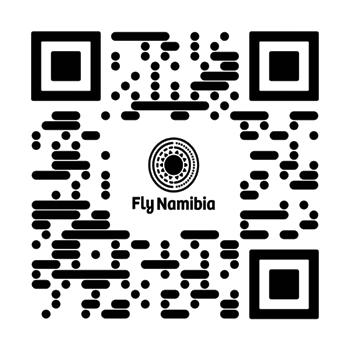
FlyNamibia between Eros Airport in Windhoek and Katima Mulilo five days a week. Visit our website for updated routes and schedules: www.flynam.com





Identifiers: Devil's Claw plants have star-shaped seeds and bright pink flowers when they are mature
In a groundbreaking initiative aimed at bridging the gap between nature conservation, agriculture and governance, Namibia is witnessing a transformation in the management of its rural landscapes. Venture Media, in collaboration with the Namibia Integrated Landscape Approach for Enhancing Livelihoods and Environmental Governance (NILALEG), has launched a podcast series to shed light on this innovative project. Jonas Nghishidi, the project leader, recently shared insights into NILALEG’s ambitious mission to foster a harmonious coexistence between people and the environment.
Across vast northern Namibia, the NILALEG Project orchestrates a series of conservation and community upliftment efforts across five main landscapes, each hosting unique activities aimed at sustainable development. Among these, the Nkulivere Landscape in Kavango West stands out for its strategic focus on many nature-based sustainable use projects, among them the sustainable harvesting of Devil’s Claw (Harpagophytum procumbens). This peculiar plant, recognised by its hook-like fruit, is not only celebrated for its anti-inflammatory properties but also as a cornerstone in the project's mission to enhance local livelihoods through the controlled and sustainable utilisation of natural resources.
Werner Mbongo and Mukoya Nyangana, project coordinators with the Namibia Nature Foundation, are at the helm in Nkulivere. They explain the initiative’s dual goals: ecological sustainability and economic empowerment. “The main objective is sustainable livelihood improvement,” Mukoya says, noting the rich abundance of Devil’s Claw in the area which catalysed the project’s inception. The NILALEG team supports local harvesters with everything from training workshops to essential harvesting tools, ensuring that the plant's extraction is managed carefully to avoid depleting its wild populations.
For local residents like Shapi Sakeus and Haiyambo Regina Kapango, Devil’s Claw harvesting has become a lifeline. Shapi describes his journey into harvesting: “I harvest Devil’s Claw because I would like to improve my life. When you sell Devil’s Claw, you can pay your children’s school fees and buy food for your house. We can live from it.” Regina’s experience echoes this sentiment, “It changed my life a lot. Now I can start a business," highlighting the project's profound economic impact.
However, sustainable harvesting presents its own set of challenges, particularly in market dependencies. Mukoya highlights a critical issue: “There is only one buyer...when you engage community members, you hear issues like they need diversity.” This limitation not only affects pricing flexibility but also exposes harvesters to the risks of market downturns. In response, the project promotes broader buyer engagement and combats illegal harvesting, which can both economically and ecologically undermine their efforts.
Central to the project's strategy is a robust training program. Werner details a peer-led education model that ensures best practices in sustainable harvesting spread throughout the community. “We train a 12-member committee from different villages on sustainable Devil’s Claw harvesting, and then they become trainers themselves,” he describes. This approach not only fosters community resilience but also ensures that sustainable methods are deeply ingrained across the region.
The economic and social benefits of the project are undeniable. Mukoya proudly states, “Our harvesters, when they do the harvesting, sell and the income is used at household level, improving their lives." He points to the increased adherence to sustainable methods and the growing number of locals registering as harvesters as key successes.
As the sun sets over the Nkulivere landscape, the promise of growth and sustainability looms large. With ongoing efforts to expand its reach and deepen its impact, the NILALEG Project is poised to set a global benchmark in sustainable natural resource management. Here in the Kavango West, through the roots of Devil’s Claw, a humble yet powerful plant, a vibrant future is being cultivated for Namibia's local communities. This project is more than just about harvesting — it’s about nurturing a sustainable future.
Scan the QR Code to watch a video on the Devil's Claw harvesting project. Follow our series on NILALEG’s impact across its five landscapes in upcoming issues. For more information on the project visit: www.meft.gov.na/projects/nilalegproject/
 Elzanne McCulloch
Elzanne McCulloch






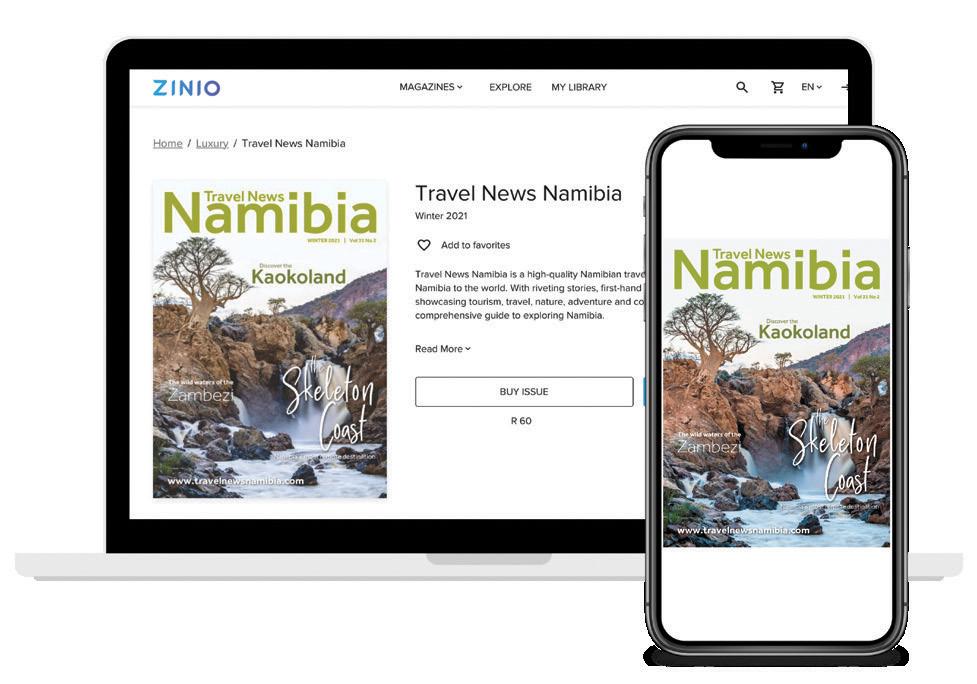




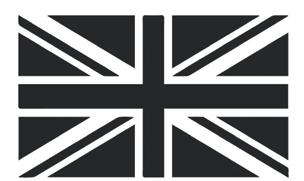
1 May 1707
The Kingdom of Great Britain is formed from a union between the rival kingdoms of England and Scotland. The union included Wales which had already been part of England since the 1500s.
2 May 2011
U.S. Special Operations Forces kill Osama bin Laden during a raid on his secret compound in Abbottabad, Pakistan. The raid marked the culmination of a decade-long manhunt for the elusive leader of the al-Qaeda terrorist organisation based in the Middle East.
4 May 1978
The South African Defence Force attacks a SWAPO base at Cassinga in southern Angola leaving approximately 600 dead and many wounded.

4 May 1494
During his second journey of exploration in the New World, Christopher Columbus discovers Jamaica.

6 May 1527
The Renaissance ended with the Sack of Rome by German troops as part of an ongoing conflict between the Hapsburg Empire and the French Monarchy. German troops killed over 4,000 Romans, imprisoned the Pope, and looted works of art and libraries. An entire year passed before order could be restored in Rome.

The birthstone of May, the emerald, symbolizes success and love.

May was once considered a bad luck month to get married. There is a poem that says "Marry in May and you'll rue the day."

10 May 1994
Former political prisoner Nelson Mandela is inaugurated as president of South Africa. Mandela had won the first free election in South Africa despite attempts by various political foes to deter the outcome.
12 May 1820
British nurse and public health activist Florence Nightingale (1820-1910) is born in Florence, Italy. She volunteered to aid British troops in Turkey where she improved hospital sanitary conditions and greatly reduced the death rate for wounded and sick soldiers. She received worldwide acclaim for her unselfish devotion to nursing, contributed to the development of modern nursing procedures and emphasized the dignity of nursing as a profession for women.

In Old English, May is called the "month of three milkings" referring to a time when the cows could be milked three times a day.
The goal of Sudoku is to fill a 9×9 grid with numbers so that each row, column and 3×3 section contain all of the digits between 1 and 9.
Celebrate, observe and take part!

1 May Workers’ Day


9 May
Ascension Day


Reaching | A desert-adapted elephant reaches for a lofty snack in the Hoanib River in northwestern Namibia. These elephants exhibit small adaptations to the extreme temperatures and terrain. They are sensitive to their surroundings in that they will not destroy trees, but browse from them more carefully to ensure their survival.









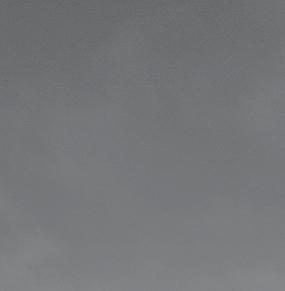


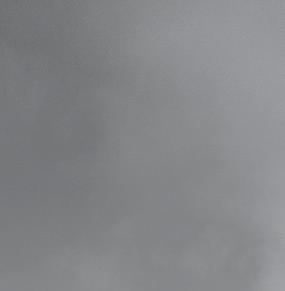

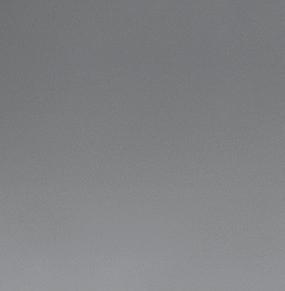
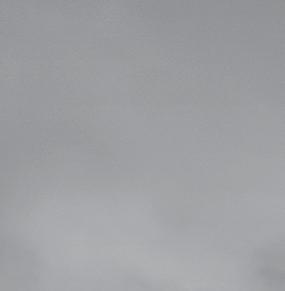
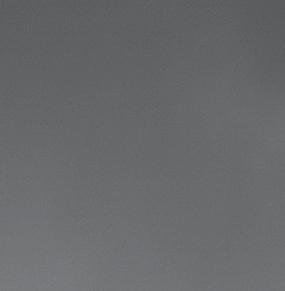




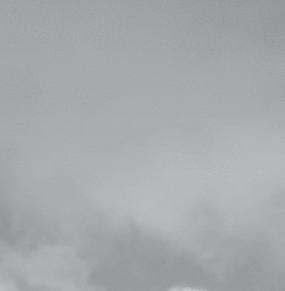
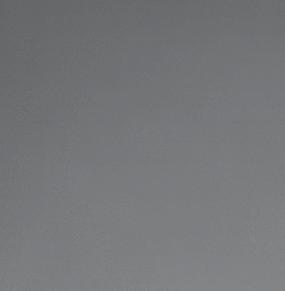
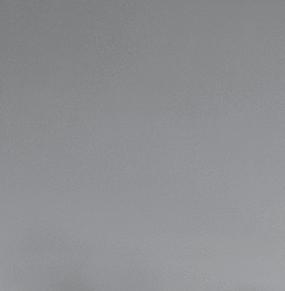
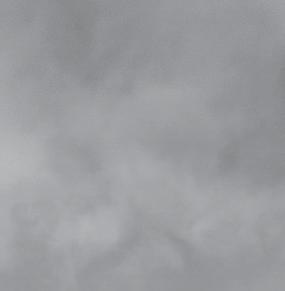


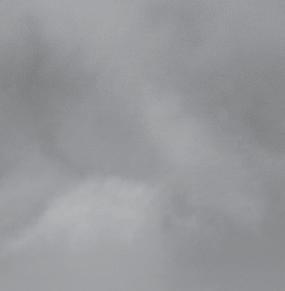

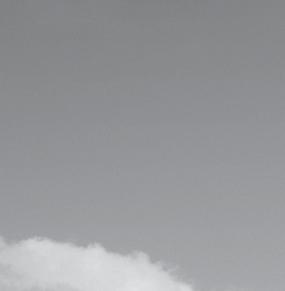

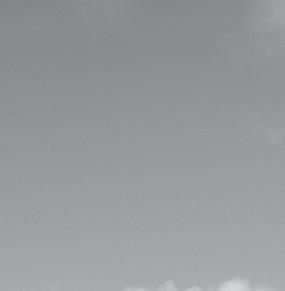
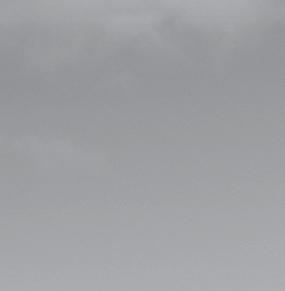
Time is the greatest gift of all.



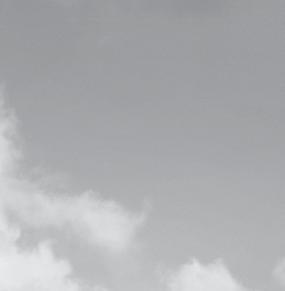





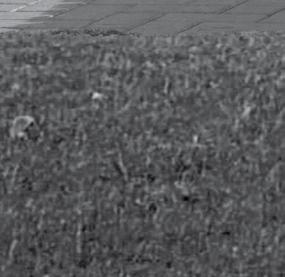

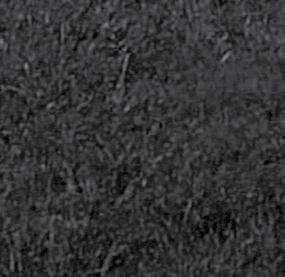

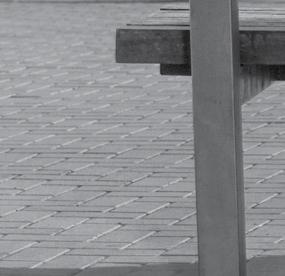







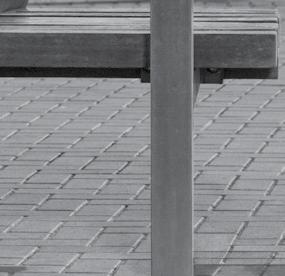























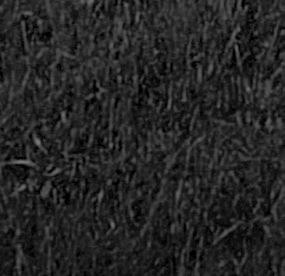



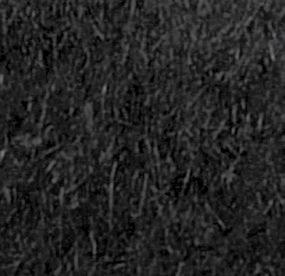

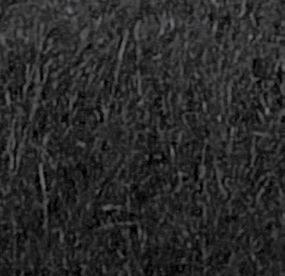
We all want more time to spend on the things that are important to us. Whatever those things may be, the good news is that if you invest early, time gives you money. And then, money gives you more time to spend on the things you love. Speak to us to make the most of your time. Call Allan Gray on +264 (0)61 22 1103, or your financial adviser, or visit www.allangray.com.na.





